#sunset strip 2000
Text
Studio 60 on the Sunset Strip intro
2 notes
·
View notes
Text
0. There Was A Time
fic chapters/warnings/disclaimers/ect
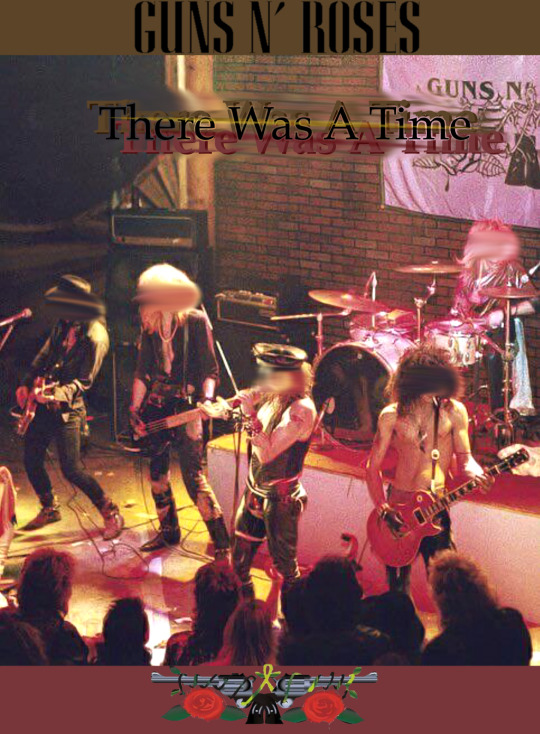
:DISCLAIMER:
Mentions of drugs/ sex ect.
English is not my first language
POV changes
x reader
inconsistent updates
time line is not perfect or accurate
Character may also not be accurate
I'll also be posting this on wattpad and maybe ao3
So if you see it wasn't stolen<3
Also i dont know how tumblr works and how to link chapters together(someone send help)
ALSO THIS NOT EDITED IN ANYWAY SO SORRY IF THERE ARE SPELLING MISTAKES
THANK YOU FOR READING MWUAH MWUAH
LEAVE COMMENTS <3
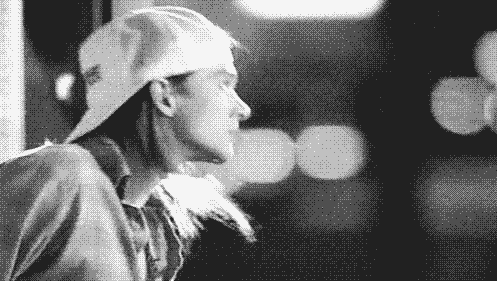
The studio was warm in the coldest night of this Autumn, warm yellowish light and the red carpeted floor made it feel like a cosy log cabin. A full drum set with a few too many ride cymbals and windchimes sat close to the middle of the fat bare bricked wall, with a small metal bucket that had the remains of broken splinter drumsticks. A rack of guitars and two bass holders stood next to the right wall where an old armchair sits, a few different sized amps scattered round the square room. Right in front of the glass that separates the control room from the studio three mic stand in a line with noise cancelling boxes surrounding each of them.
In the control room there is a strong smell of weed and other smokeable herbs, "No! You can't take Runaway Blues off the album!" A man with short shoulder length brown hair and a moustache protested as he puffed on his cigarette as he lied back on the couch, his dark glasses fell back on his face as he tilted his head back. "I agree with Jake. It shows how good we are even when we're shit faced." The man with long curly hair, a gorgeous ethnic nose, stood up – towering over the other 4 people in the sesh – and began to roll another blunt on one of the control panels. The one that started this debated piped in, "Thanks Dan for taking my side." He said sarcastically, his curly mullet was like a solid cloud on his head, and he has a moustache like Jake. "We'll our wonderful manager and producer here," A man that looked like Jesus pointed to a woman that sat next to Jake on the couch. "Was the one that wasn't shit faced, I think that's why it was actually good, Joshua." He finished. "Hey, hey, I'm not saying it's shit because of you, please believe me y/n!" Josh dramatically pleaded to y/n. She was looking up at the ceiling. Pupils dilated. Blunt in hand. "Just, make it shorter." She said confidently, waving her hand a bit. Still not looking at anyone and head craned back. "You have the answer to everything." Danny said his mouth slightly gaped that such a simple solution didn't register in any of their minds. Or he's just on a psychedelic trip and can't spark up a brain cell.
The following week the band had dates in LA since they were still doing there 'Dreams in Gold' Tour. The band was already at the venue setting up, some still sleeping in the bus. Y/n had some business to attend to in their studio in New York before going down to LA. She decided to walk down the infamous Sunset Strip, as a historic music place like this could not go untrekked when having the chance. Wearing a black turtleneck, dark blue flare jeans with dark brown boots and a satchel bag hanging from her shoulder, a small suitcase's handle in the other hand while the silver case dragged its wheels on the floor. As she caught the sight of the colourful sign of The Rainbow, a voice called to her. "Y/n?" A older man, short blondish hair, leather jacket, sunglasses.
Axl Rose.
And like the trigger of a gun being pulled,
A life was lost.
(or misplaced)
Y/n's POV:
Everything stood still,
I stood still.
Then it all went dark. It was a black lifeless void.
Falling backwards but being physically still.
Time was reversing.
A previous life. My life?
Memories rolling past like an old film.
My head spiralled.
I can't comprehend this. What is happening to me?
My first years of school, late 60's early 70's. That's not right. It was the early 2000's.
Falling in love with music, Queen, Elton John.
Highschool was trip. My parents being stricter than anyone else's, they didn't believe I could have a job as in the music industry.
Studying music in college then going on the Uni and taking a science course to get my folks off my back.
One of my most successful record deals was Mötley Crüe and Bon Jovi.
Before they even started writing lyrics for their songs, I knew it off by heart and helped them gain success with it and recording went like dream.
Now I was searching the East Coast for a new band to sign.
March 1985, The City of Angels.
A flash of light, and my eyes flickered open.
It a cold night, dark but the city light was somewhat comforting.
It was the Sunset Strip, but something was...
Off.
------------
OMG SORRY IF IT'S SHIT
THIS WAS LIKE THE INTRODUCTION, FIRST PART IS COMING OUT SOON
IM SO EXCITED
(Band at the beginning is greta van fleet )
#guns n roses#axl rose#slash#duff mckagan#izzy stradlin#steven adler#gnr fanfiction#x reader#axl rose x reader#slash x reader#duff mckagan x reader#izzy stradlin x reader#steven adler x reader#time travel#gnr#axl gnr#slash gnr#duff gnr#izzy gnr#steven gnr#guns n roses fanfic#Spotify
84 notes
·
View notes
Text

Matthew Perry, best known for playing Chandler Bing in the hit TV sitcom Friends, has died at 54, according to reports.
Perry drowned at his home in Pacific Palisades, Los Angeles, sources including a representative for the actor and law enforcement told NBC News. Other US outlets also reported Perry had died.
After small roles in Growing Pains, Beverly Hills 90210 and Dream On, Perry scored a role in NBC sitcom Friends in 1994. The comedy, about six friends living in New York City, quickly became a phenomenon, winning multiple Emmys and scoring record ratings.
Perry went on to play the sarcastic and neurotic Chandler in 10 seasons with the 2004 finale reaching over 52 million viewers in the US, making it the most watched TV episode of the 2000s.
“People come up to me every day and say, ‘Hey Chandler!’ I don’t respond to it,” he said in a 2014 interview. “If somebody says, ‘Hi Matthew, I love your work’, that’s one thing. But if somebody goes ‘Yo, Chandler’, I don’t like that. I’m tired of it. I’m not Chandler.”
Perry was born in Massachusetts in 1969 to an American father and a Canadian mother, who would later move her son to Ottawa to work as a press aide to Canadian prime minister Pierre Trudeau. In his bestselling 2022 memoir Friends, Lovers, and the Big Terrible Thing, Perry recalled acting up after his father abandoned his family to chase his own dreams of becoming an actor – including bullying a young Justin Trudeau. “I decided to end my argument with him when he was put in charge of an entire army,” he wrote.
At 15 Perry moved to Hollywood, with the hope of reconnecting with his father. It was there he began to enjoy acting, and was eventually spotted at a diner, “charming a bunch of young women”, by director William Richert, who left a note asking him to be in his next movie, A Night in the Life of Jimmy Reardon, alongside River Phoenix.
Perry was 24 when he started playing Chandler and was relatively unknown, just like his co-stars Jennifer Aniston, Courteney Cox, Lisa Kudrow, Matt LeBlanc and David Schwimmer. In a 2019 interview, Friends creator David Crane said Chandler was the most difficult character to cast; actors Craig Bierko, Jon Cryer and Jon Favreau were also considered for the role.
“Marta [Kauffman, co-creator] and I were thinking Chandler is just poorly written,” added Crane. “Then Matthew came in and you went, ‘Oh, well, there you go. Done. Done. That’s the guy.’”
Perry was nominated for an Emmy award five times, including once for his Friends role and twice for his role as lawyer Joe Quincy on The West Wing.
During his tenure on Friends, Perry starred in films including Fools Rush In with Salma Hayek, Three to Tango with Neve Campbell and The Whole Nine Yards with Bruce Willis. He also played small roles in Ally McBeal and Scrubs.
In a 2002 interview with the New York Times, he confessed: “I wanted to be famous so badly. You want the attention, you want the bucks, and you want the best seat in the restaurant. I didn’t think what the repercussions would be.”
Perry’s personal life was afflicted by addiction, starting in 1997 when he became addicted to pain medication after a jetski accident. He later claimed to not remember three years of his time on Friends and to spending over $9m on his fight to stay sober.
“I was taking 55 Vicodin a day, I weighed 128lbs, I was on Friends getting watched by 30 million people – and that’s why I can’t watch the show, because I was brutally thin,” he said. Perry later admitted he had suffered severe anxiety “every night” while filming the show and felt nothing when the show ended.
Once Friends ended in 2004, Perry’s next small-screen lead was in Aaron Sorkin’s Studio 60 on the Sunset Strip, which was cancelled after one season. In 2009 he starred in hit comedy 17 Again alongside Zac Efron, and later guest-starred on both The Good Wife and The Good Fight.
Perry also led one season sitcom Go On and a remake of The Odd Couple which lasted for three seasons. In 2016 he wrote and starred in play The End of Longing which opened in the West End and later transferred to Broadway.
In 2019, he was put in a two-week coma when his colon exploded due to opiate abuse; he had 14 surgeries due to his opiate abuse. “At this point in my life, the words of gratitude pour out of me because I should be dead, and yet somehow I am not,” he wrote in last year’s Friends, Lovers, and the Big Terrible Thing, which was a hit with readers and critics. The Guardian’s Barbara Ellen called the memoir “harrowing and revealing about the juncture where extreme compound addiction collides with mega-celebrity”.
“You have to get famous to know that it’s not the answer. And nobody who is not famous will ever truly believe that,” Perry wrote.
Daily inspiration. Discover more photos at Just for Books…?
19 notes
·
View notes
Text
The Ill Communication within Armand Hammer's We Buy Diabetic Test Strips

[ on_
telephones_
paradox_
repetition_
thresholds_
accessibility_
&_
death_.]
############################################
Noises! Such a jangle of meaningless noises had never been heard by human ears. There were spluttering and bubbling, jerking and rasping, whistling and screaming…. The night was noisier than the day, and at the ghostly hour of midnight, for what strange reason no one knows, the babel was at its height.
—Herbert N. Casson, from The History of the Telephone (1910)
…a paranormal scrambling of phones…
—Aesop Rock, “All the Smartest People” (2021)
The children’s game of “telephone” depends on the fact that a message passed quietly from one ear to another to another will get distorted at some point along the line.
—Eula Biss, “Time and Distance Overcome” (2008)
The doors gaped on the gloom within. He paused on the threshold. “Do you know the code?” she asked.
—W. E. B. Du Bois, “The Comet” (1920)
A call to lighten up and eavesdrop on the eavesdrop to stop the reoccurrence.
—Sonic Sum, “Window Seat” (2000)
#.
We were prompted by postcards. We made calls to 1-877-ARM-N-HMR. We heard deceptive noises. We were duped by familiar sounds. We hung up. We dialed again, carefully this time. We heard abrasive percussive sounds. We heard crackly foreign languages processed through a bandpass filter. We heard this was a promotional campaign. Some of us, likely the loneliest or most curious of our lot, left messages after the tone, after the beep. We left messages for who knows who. A chosen few of those messages were transmitted over social media channels, eliciting further calls to the hotline. We were suckers, or we were onto something, or we were part of something.
#.
I used to have numbers memorized in my head. I used to call 1-800-COLLECT when I needed to be picked up from somewhere. The operator would say, Will you accept a collect call from…? And I would shout into the receiver at my mother, Pickmeup, pickmeup, pickmeup! I used to check the coin returns on every payphone I passed. Sometimes I’d even find change. I used to dial 555 followed by the last four digits listed on the payphone, hang up three times, and listen to the phone ring on its own, forever and ever and ever, amen. Payphones used to dot the city landscape. Now they don’t, but signs that offer to buy your home, your junk car, your diabetic test strips do.
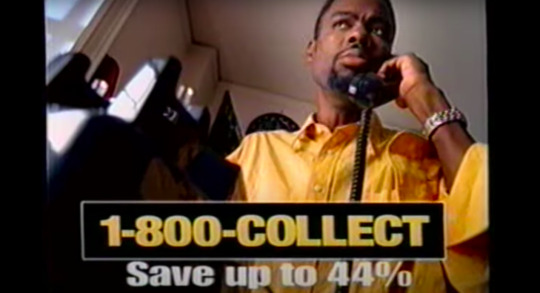
#.
ALEXANDER RICHTER:
[woods] must have told me about the project some time last year—played me some early records and told me the idea for the album title. From there, we discussed ideas for documenting these signs in the streets in context to using them for album cover [and] packaging. I went out on two missions to take the photos. The first was in Brooklyn on Atlantic Ave. and some of the surrounding blocks, and the second was along Roosevelt Ave. in Queens. The goal was to put together an album package that hopefully conveyed the connection to the album name and additional photos that would support the strange guerrilla style marketing that can happen in the street.
#.
Armand Hammer has cracked the alchemical formulae for wheatpaste and solvent acrylic packaging tape. We’ve now seen them plastered in public squares from New York to London. There’s no telephone to heaven, word to Michelle Cliff, but ELUCID’s been trying to get to heaven yet refusing to sit down. “The rep grows bigger,” he said on “As the Crow Flies,” and look where it’s gotten him—on a billboard along Sunset Boulevard in Los Angeles. Graffiti writers stare skyward, tempted to bomb the heavens. You read right: an album with guerrilla communication at its core on a label that has purchased prime advertising space, thereby opening itself up to culture jamming jokesters.
How long will the billboards endure? Ghost signs in Brooklyn persist, denying erasure. Always a residue, a palimpsest of what was and continues to be. Faulkner guffawing in his grave. The past is never dead. It’s not even past, homie. Look at A. Richter’s lamppost photograph in the album art. The thoroughly papered pole—edges frayed and flickering—like tendons torn from bone. Those many messages never leave; they linger, never fully removed, never fully vanished. The FLAC files are lossless. We Buy Diabetic Test Strips is a litter-ary text.
How far will their message reach? ATTENTION, ATTENTION: CALLING ALL MOTHERFUCKERS…, Pink Siifu shouts at the start of “Trauma Mic,” the first single from We Buy Diabetic Test Strips, the first Armand Hammer album to be released on a label other than Backwoodz Studioz. Fat Possum, presumably, offers wide distribution and vast promotional resources. From El Segundo to Cape Town, Armand Hammer is available to listeners, but is the message welcomed? How many people will accept the collect call? Is the message being received as intended? Does it matter?

#. I GOT AN ANSWERING MACHINE THAT CAN TALK TO YOU
In the 1990s, woods’s “vision board was uncluttered” (“Don’t Lose Your Job”), but now he’s fending off brothers who drop “a project every month [and] got the nerve to ask if [he’s] peeped it.” He feels like Posdnuos on “Ring Ring Ring (Ha Ha Hey),” dealing with every Harry, Dick, and Tom with a demo in his palm. Armand Hammer’s popularity has been steadily growing over the past decade, exponentially of late, and like the children’s game of “telephone,” their message, the transmission, runs the risk of competing with noisy interference and distortion. They open themselves up to “misrepresenting the rhymes and all that,” as woods raps on “Empire BLVD.” “Imagine Jesus reading the Gospels,” he suggests, only to bring it back to his own experience: “SMH Rap Genius improbable readings.” More listeners—do the wrath of the math—means more misreadings. Armand Hammer’s ascent has culminated with coverage in the prestigious pages of places like The New York Times and The Washington Post. The comments section on the latter does what comments sections do. The majority of this “discourse” misreads Armand Hammer, rap music, and America. Commenter “observer25” claims to have listened to WBDTS. Their conclusion? “I tried—in vain—to hear talent, something pleasant to the ear…[but] I heard random noises and sounds devoid of any rhythm and accompanied by silly juvenile phrases.” That’s gloryhallastoopid, as ELUCID says, echoplexing Parliament. Such are the pitfalls of popularity. woods feels him on that. Forget being forthright; the line is fuzzy. On “Landlines,” the “voice-to-text [is] fucking up,” but woods “still sent it to capture the sentiment.” On “Woke Up and Asked Siri How I’m Gonna Die,” he describes how he “mumble[s] through the brain fog, / [With] tinnitus like a chainsaw.” ELUCID, on “The Flexible Unreliability of Time & Memory,” complains of a “headful of lightning, the signal in the noise.” Distortion wins the day.
How does it feel? ELUCID asks, again and again, on “When It Doesn’t Start With a Kiss,” and, frankly, we as the audience don’t know. We’re peanut gallery hecklers, at best. On May 17, 1966 in Manchester, England, a disgruntled fan screamed “JUDAS!” in between Bob Dylan’s raucous electric set. Dylan’s rejoinder, muttered into his lonely microphone from the dark stage in the cavernous hall, was “I don’t believe you. You’re a LIAR!” He turned to his band and said, Play fucking loud! They demolitioned into “Like A Rolling Stone,” whose chorus infamously asks, How does it feel…to be a complete unknown? On “Spellling,” ELUCID spoke of “Iscariots litter[ing] the valley,” prophesying what was to come.
Armand Hammer—billy woods and ELUCID—are now both known and unknown; they appear in press aplenty but remain enigmatic, still camo’ed. The comments section on the WaPo article had casual reader-ignoramuses assuming the duo is wealthy, living large off capitalist critiques. Fans know better. But Armand Hammer are unknown to listeners, too. Can we ever really know their intent, even on the rare occasions when they divulge something? woods will sometimes spill details and insights in interviews, but ELUCID is as buttoned-up as a straitjacket, not even printing his lyrics, as if that would dispel their magick. Which is interesting when we consider the images they present to the public, to the camera lens: woods strives for facelessness while ELUCID smiles like MIKE when he can, when he’s feeling all in the sun. With WBDTS, woods and ELUCID loiter at the threshold between known and unknown, nondescript citizens[1] and recognizable celebrities.
#. BEEN DOWN SO LONG IT LOOKS LIKE UP TO ME
Mega Desu from the Secret House Against podcast noted Co Flow as “the new pop sensation” in the Bizarro World referenced on “Legends,” and surely Armand Hammer isn’t going to be receiving heavy Hot 97 rotation. They will, though, embrace De La Soul’s buhloone mindstate, insofar as they might blow up, but they won’t go pop, and—knowing these guys—“blow up” will mean vertiginous versifying that alludes to Julio Cortázar, Michelangelo Antonioni, and take-your-pick of historical leftist cadres that dabbled with incendiary devices. The ceiling is the roof for woods and ELUCID, and it seems well within their power and agency to tear da roof off this sucker, be it by Busta Rhymes or Parliament designs.
ELUCID credits and quotes Tricky verbatim from Pre-Millennium Tension (1996): “Everybody want to be naked and famous.” The sentiment rings out, seeing as how we’re always feeling a pre-millennium tension—early onset, late blooming. “Echoes and reflections,” in ELUCID’s words. As the rep grows bigger, the fans cop from Backwoodz and, like a habit-forming first hit, they become addicted. The songs on WBDTS induce dependency (“rather be co-dependents,” remember). Cavalier speaks to the chronic compulsion on “I Keep a Mirror in My Pocket”: “I once copped from woods—ain’t been the same since.” A “gateway drug” without the bad faith or scare tactics.

#.
Any upward trajectory Armand Hammer may experience appears to remain grounded by a firm grasp on reality. “Climb the mountain together, but the descent [is] riddled with crevasses,” woods raps on “The Key is Under the Mat,” shouting back to ELUCID who earlier announces them as “the only Blacks in the rock climb.” Decked out in harnesses and carabiners, they’re enlightened enough to recognize the paradoxes of their path, a knowledge that comes from having “been in a hole at the bottom” but attentively studying “pretty clouds.” Like The Snow Leopard (1978), Peter Mathiessen’s account of his trek across the Himalayas after his wife’s death from cancer, woods and ELUCID are searching, suddenly seeing that “form is emptiness and emptiness is form.” Have they reached New Agey nirvana? Maybe. If they have, they’ve gone to tell it on the mountain, over the hills and everywhere. Grand verbalizing and sermonizing from the mount.
It can be lonely on the mountaintop. Like MLK’s last speech, they speak words prophetic and perturbed: Well, I don’t know what will happen now…. We’ve got some difficult days ahead…longevity has its place…I’ve looked over, and I’ve seen the Promised Land…. I’m not worried about anything…. More accurate might be Baldwin’s description from “Stranger in the Village” (1953): “The landscape is absolutely forbidding, mountains towering on all four sides, ice and snow as far as the eye can reach.” Think Kiliii Yuyan’s photograph for the Terror Management album cover.
#.
William Woods to the white courtesy phone.
—“Kanun” (2013)
In her essay “Time and Distance Overcome,” Eula Biss gives a condensed history of the telephone, but—more specifically—telephone poles. She documents early reactions to the sudden appearance of poles lining the streets. Newspaper editorials described the poles as “an urban blight.” “The poles carried a wire for each telephone,” she writes, “sometimes hundreds of wires…. The sky was filled with wires.” She attributes this “War on Telephone Poles” to “that terribly American concern for private property and a reluctance to surrender it to a shared utility.” In light of this, we might read the excessive flyer and advertisement eyesores stapled to poles as symbolic resistance—a reclamation of ground ceded to government. But, Biss points out, there was also “a fierce sense of aesthetics” to consider, “an obsession with purity, a dislike for the way the poles and wires marred a landscape.” I can’t help but hear echoes of that Washington Post commenter dismissing Armand Hammer’s music as nothing more than “random noises and sounds devoid of any rhythm.” The commenter’s opinion bred, ostensibly, by ignorance and hatred.
#.
Six years ago, ELUCID began Armand Hammer’s “Microdose” with a caustic-ass quotable: “I was born in the year of this country’s last recorded lynching— / My question is: Who stopped recording?” In her essay, Biss includes a litany of lynchings perpetrated through the exploitation of telephone poles for that malevolent purpose:
In Pittsburg, Kansas, a black man’s throat was slit and his dead body was strung up on a telephone pole. Two black men were hanged from a telephone pole in Lewisburg, West Virginia…. In Greenville, Mississippi a black man accused of attacking a white telephone operator was hanged from a telephone pole…. A black man was hanged from a telephone pole in Belleville, Illinois, where a fire was set at the base of the pole and the man was cut down half-alive, covered in coal oil, and burned…
The telephone poles, Biss explains, were “convenient as gallows” due to their “tall and straight” structure, their “crossbar,” and fixed location in “public places.” It was only a “coincidence,” she says, that a pole might “resemble a crucifix.”

#. DUNN, I’LL HIT YOU RIGHT BACK, ’CAUSE THE STATIC IS THICK
In the introduction (the “User’s Manual”) of Avital Ronell’s[2] The Telephone Book: Technology, Schizophrenia, Electric Speech (1989), she writes:
Dealing with a logic and topos of the switchboard, it engages the destabilization of the addressee. Your mission, should you choose to accept it, is to learn how to read with your ears. In addition to listening for the telephone, you are being asked to tune your ears to noise frequencies, to anticoding, to the inflated reserves of random indeterminateness—in a word, you are expected to stay open to the static and interference that will occupy these lines.
“We shall constantly be interrupted by the static of internal explosions and syncopation,” Ronell continues, “—the historical beep tones disruptively crackling on a line of thought.” So on “Landlines,” ELUCID acclimates us with onomatopoeic omnipresence: “Leave a message at the beep-beep.” “Don’t play on my phone ’less you Badu,” woods warns, though if I put in a call to Tyrone, or André 3000, or Common, they might advise otherwise.[3] The telephone, Proust writes in The Guermantes Way (1920), is “a supernatural instrument before whose miracles we used to stand amazed, and which we now employ without giving it a thought.” On “I Keep a Mirror in My Pocket,” Cavalier “yell[s] in speakerphones while [he’s] walking brisk” as he DialsA’Freaq on his Cel U Lar Device, his “handheld obelisk.” The phone becomes something monolithic. Mesmerized by the mirror. But also desensitized to our devices—appendages, really. I put in a call to Walter Mosley, and he confirms that Jane Barbe or Ma Bell is the true “devil in the blue dress” that woods refers to on “Niggardly (Blocked Call).”
#. GET YOUR PHONE PHREAK ON
We got ya phone tapped—what you gon’ do?
’Cause, sooner or later, we’ll have your whole crew,
All we need now is the right word or two…
—The Firm, “Phone Tap” (1997)
Escobar tells Sosa at the end of “Phone Tap”: “Don’t even use the phone—just come to my crib.” But frequently that frequency eludes us—we can’t simply avail ourselves of that level of immediacy and intimacy. We are so often siloed, satellite states of our own making. Most of our messages come from the beyond, the before, and the hereafter. I hope it’s nothing but hoes in paradise, in different area codes.
We can call it the call-back. The return-of-the. ELUCID and woods are ceaselessly placing calls to their past selves—relentless as robocalls, tireless as telemarketers. ELUCID calls back to “Old Magic,” establishing a “double portion and protection.” You don’t work, you don’t eat calls back not only to “No Days Off,” but way back—to the Soviets, to Saint Paul. “I read the paper even though they tell me not to,” woods raps, and all three of these allusions to their own body of work appear on “The Flexible Unreliability of Time & Memory,” though it seems their sense of time & memory might be more intact than they think. Ten years of Armand Hammer, and woods reads the paper (if you go back and look) on the cover of Race Music, their 2013 debut.
On “Total Recall” [re-call], ELUCID calls back to woods on “Marlow” from Terror Management: “Earth getting warmer; we going the other…” Like a call to repent (as Cavalier says on “I Keep a Mirror in My Pocket”—a chorus which calls to a magic mirror we know from “Snow White,” courtesy of the Brothers Grimm), mourning our Anthropocene epoch—what a time we chose to be born.[4]
#.
CHILD ACTOR:
I made [“The Flexible Unreliability of Time & Memory” beat] very intuitively without any hard knowledge of where they might take it. I did add in some glitchy talking samples that I think [woods and ELUCID] both picked up on in their own ways. One either seems to say “when” or “where” depending how you hear it, which I imagine may have had something to do with the mystical title. I guess, now that I think about it, I definitely liked the way the “when” sample went with the unmoored timing of the beat and lent it an uncanny feeling, which I guess qualifies as some kind of message! I dropped in another talking sample (someone saying “...a lousy…”) that I altered, which ended up sort of sounding like they were saying “Allah.” I don’t think I noticed that much at the time and just thought of it as garbled language, but woods clearly heard it that way and now of course there’s no other way to hear it after what he did with it.
It’s rare to be asked to specifically custom-make a beat for a particular artist; normally I just send packs upon request and I imagine that’s the norm for other producers too. But secondly, it was quite a challenge to have to make the beat from one specific sample source considering I can often go through multiple records before settling on just the right sample to make a beat from. On top of all that, since I was sampling this session with Shabaka [Hutchings] and Adi [Meyerson] that I had really good memories of, I had a desire in the back of my mind to make a very substantial use of the session so their playing could come through in some way despite the way I flipped it. That’s also why I included a snippet of the session as the outro. This particular session was a pure improvisation among the three of us and owes its character substantially to the bassline that Adi locked into a couple minutes into the original source recording. I was really laying out and trying to give Shabaka’s beautiful melodic playing space while fleshing out the harmonic possibilities implied in Adi’s bassline. Though they sent me stems, I elected to make the beat by sampling the full rough mix since, again, that’s the way I’d normally approach making a beat that I sample from a record. That also forces me to make entirely different decisions than what I’d do if I was working with each individual sample, plus again is a way to maintain the true ensemble feeling of the source.
#. EUPHORIA BOOMERANG SIDE-EFFECT
The more popular you get, the less you’re understood. Can’t it be all so simple? Basic comprehension skills fail, go fuzzy (I can feel it). Signals get crossed; a paradox is a crossed signal. What’s supposed to be communicated is killed before it can be; what’s not meant to be communicated is. woods might “think in cursive,” but he “spit[s] jagged fragments”—curvatures gone crooked—and, ultimately, “every word out [his] mouth drag[s] [his] people backwards,” as he says on “Niggardly (Blocked Call).” Progress becomes its antithesis, and ain’t that a bitch?
Words spoken are misheard or misinterpreted. I’ve seen music journalists self-censor the writing of “Niggardly (Blocked Call).” The text speaks, apparently. Its tongue splits and twists. Maybe I’m the one mistaken. In Philip Roth’s novel The Human Stain (2000), Coleman Silk loses his job as a college professor when he refers to two students who’ve yet to appear in his class as “spooks.” What seems to be an issue of absenteeism becomes a racism scandal when it’s revealed that the two truants are Black. Complicating matters further, Silk has spent the majority of his life passing as a white Jew, though he’s actually a Black, Howard University dropout from East Orange, New Jersey.

Our world is paradox; Armand Hammer load lines like cargo crates onto the Ship of Theseus. woods: “I walked out of Denny’s like it was Ruth’s Chris” (“Y’all Can’t Stand Right Here). ELUCID: “Fed till nothing’s left and feeding on myself” (“The Key is Under the Mat”). woods: “Every answer I gave in the form of a question” (“Landlines”). We live with contradictions. woods gives thought to “people [he] lost to COVID-19, but it ain’t do a thing to the fiends.” By invoking all that was—and, in some cases, remains—uncertain and unanswerable about the coronavirus, woods sings a post-pandemic[5] blues. We couldn’t find reliable stats on susceptibility, transmission, or infection. Skepticism had us Lysol-wiping groceries, rocking latex gloves, and chugging bleach. Where did public health end and propaganda begin? How to sort through data and disinformation when inundated by both?
Entertain the temptation to destroy everything. On “Don’t Lose Your Job,” woods dons a “bomb vest but nothing happened when [he] pressed the button,” which is only a slightly altered ending to Pastor Ernst Toller’s fate in Paul Shrader’s First Reformed (2017)[6]. ELUCID acknowledges the absurdity, side-steps the suicide solutions of woods and Camus, only to be left feeling like he’s gonna “buy life insurance and just….” The title says “Don’t Lose Your Job,” but Tongo Eisen-Martin’s poem “Wave at the People Walking Upside Down” says
you are going to want
to lose that job
before the revolution hit
Are you the one waving, or are you the person walking upside-down?
#.
Rappers tired—inertia the only thing keep ’em moving.
—“Aubergine” (2021)
K.I.M. turns to stasis. Repetition is the enemy of Armand Hammer. “The Flexible Unreliability of Time & Memory” introduces a galaxy of surrealistic surveillance state moments that repeat, repeat, repeat—as if we’re standing still, as if the screen froze. Passwords stay the same and the identity thieves grow savvier. ELUCID shuffles past “fake trees in the Apple Store,” brick-and-mortar built on an ethereal web address. “I feel a way about proving my identity to robots,” he says, and who doesn’t? Silicon Valley fuckboys gonna captcha bad one. I’ll click a checkbox for no man or machine. I authenticate my own experience. Refusal to “update another version” like ELUCID mentions on “Switchboard.”
When ELUCID says he “wore the same thing yesterday—all white; more dingy,” he admits to the residue of repetition. He’s also “sweating through silk,” tainting and staining the textile. Edges are frayed; no clear or clean lines.[7] That silk—that Bombyx mori, if we’re dropping the precisest science—shimmers prismatically from every fiber of his being, each angle refracting. Should I play it again? he asks, knowing the answer ahead of time. Embracing “many multiplicities,” ELUCID is “living every mystery.” ELUCID, as any head nadda would know, is indebted to Édouard Glissant who says “multiplicity comes from those somewhat secret, somewhat unknown places.”
Addicted, but not addled by, the pleasures of ad infinitum, ELUCID “would run it back again.” I would run it back again. I would run it back again…. He’s not fretful of going explosive. On “When It Doesn’t Start With a Kiss,” his big-bang [re]birth, that “new light: exploded back from the womb-pit, / New myths, new names,” is reinvention. Repetition such as this springs somethin’-somethin’ anew. Fuck the forceps; he’s gonna “scream [his] way out.”
He discovers himself “back in places, cycles, residual loops.” No unwitting cog-in-the-machine—ELUCID is cognizant. Knows his place/meant, to borrow a Baraka neologism. Folks. This here is the story of ELUCID as Ishmael Reed’s Loop Garoo Kid. A neohoodooist so bad [not bad meaning “bad” but bad meaning “good”] he made “a working posse of spells phone in sick.” That’s right—you read correct: spells…and phone. woods isn’t oblivious either. He got the memorandum that reads “hindsight before it happens” on “The Key is Under the Mat.” And on “Switchboard,” ELUCID employs a kind of tricolonic puzzle about his mental processes: “Forgetting; I remember; I forget again.”
CHILD ACTOR:
I understand “loop” doesn’t literally need to mean loop, but, to be clear, I didn’t loop anything. I made this [beat] the way I make pretty much all of my other beats, which is mainly playing the chopped-up samples live—not to a click track or grid—without going back and editing much. It was actually especially important to me to try to make this one like my other beats in some distinct ways since the sample source material and other specifics were so unusual. I was worried it would end up sounding like a different producer if I got carried away, and I always like to have some kind of identifiable sound to what I do.
On “Don’t Lose Your Job,” we watch as woods “break[s] up weed on one phone; FaceTime[s] on the other.” Moving beyond facile observations about multitasking, Henri Bergson writes of “other worlds…existing in the same place and the same time” like “twenty different broadcasting stations throw[ing] out simultaneously twenty different concerts which coexist without any of them intermingling its sounds with the music of another.” Now apply that same metaphor to telephones. On “FaceTime,” remember, woods saw the simultaneity of his personal experience within the chaotic and electric world around him: “I’m just waiting for my phone to ping, / I’m thinking about you when I’m supposed to be thinking about other things.” We accept the inertia of our doomscrolling into the state of a sedentary living moment, sadly.
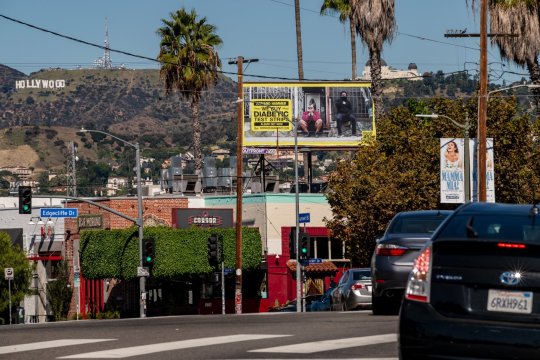
#.
To escape rote existence—to unstick oneself from the time lag, drag, or stag[nancy]—you need to expose portals and cross through thresholds. woods is no stranger to the crossover. He’s playing “pick-up ball, half-court, four-on-four” on “The Flexible Unreliability of Time & Memory.” Crossover like Rafer Alston, Rod Strickland, God Shammgod, etc. Crosses the River Jordan to the Promised Land while Iverson sings that old Negro spiritual, Roll, Jordan’s ankles, roll. We must accept this: Armand Hammer has crossover appeal. Their frequencies cross over into other genres that they bend circuitously, curiously, with alligator clips, transistors, and toggle switches. Not limited to rivers (older than the flow of human blood in human veins), they cross the mainstream, potentially—insofar as a mainstream exists in our entropic and stochastic world. On WBDTS, Armand Hammer crossover from the afterlife to this reality and back, and often—a simultaneity of subway stops. Listen for the crosstalk, the noise. Feel for the “bad energy” woods swears he won’t give us on the chorus of “Niggardly (Blocked Call).” Take heed of the transference.
#.
CHILD ACTOR:
I had heard the first couple JPEGMafia beats for “Landlines” and “Woke Up and Asked Siri How I’m Gonna Die” (we were actually supposed to play along with those beats, and I had sort of prepared something to what became “Landlines,” but we ran out of time). I found them really thrilling and made a conscious effort to make some decisions that would make the track fit in with that sound without biting the style. That definitely inspired a lot of the sound design I did. To me, the sound design evokes strange chunky metal doors opening to other realities/paths or violently slamming shut. I was pretty pleased that it ended up coming right after those same two beats in the tracklist, especially since those guys are notoriously meticulous with tracklists. It felt like the best possible confirmation to me that I had accomplished the mission. After the fact, I noticed this [beat] has a lot of inadvertent similarities to “Charms”—same instrumentation of flute/keys/bass/hand percussion though presented entirely differently as well as a general mystical theme in the lyrics. “Charms” the light and “The Flexible Unreliability of Time & Memory” the shadow. Also both track 3!
#. TRANSBLUESENCY
Tryin’ to separate me from the blood is disrespect
like you coming in my home and not wiping your feet on the rug.
—Big Gipp, “Cell Therapy” (1995)
How we go about crossing over matters. woods stands in the genkan as he mentions “house shoes on tatami floors,” and ELUCID doesn’t mince words when he evaluates how you welcome him: “Don’t invite me to your house, ask me to remove my shoes, and your floors ain’t clean” (“I Keep a Mirror in My Pocket”). He’s not a huckster at your door, he’s a Huxley adherent; he kicks in your Doors of Perception, wavin’ the Fourth Vision.
The threshold is a place/meant where police sketches are left half-drawn (Inshallah). The threshold is crowded with charlatans, grifters, and wolves in sheep’s clothing. The choice was—and is—yours: “Kevin Samuels or Dr. Umar,” though neither choice is appealing. A real Scylla or Charybdis dilemma. And Dres knows, like woods, that “Jimmy Baldwin[’s] not coming through that door.” Sense left a long time ago, leaving only non-.
Navigating through the threshold is easier said than done, and half-steppin’ won’t guarantee passage. On “Supermooned,” woods seeks help from a reluctant specter of a woman, but “she slipped away in the garden maze amidst the twists and turns.” The woman teases woods, leading him on, leading him into a more complex tangle: “She called for me with a laugh—from where, I couldn’t discern.” He’s been in situations like this before, like on “Stonefruit,” where the mystery woman hides “back behind bougainvillea.” She slipped away with a slipstream strangeness—unquestionably some syncretic moon deity making mischief.
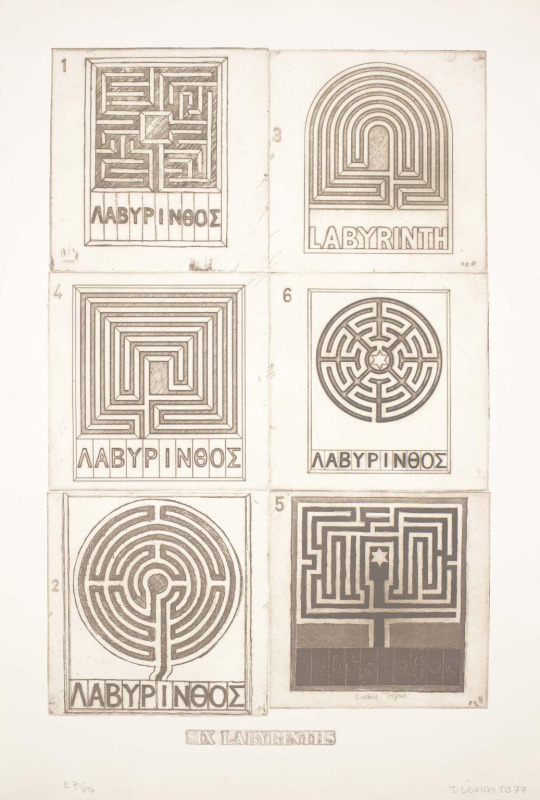
#.
woods’ moon goddess “called for [him],” but it wasn’t sufficient enough to guide him through the threshold completely. Call me when you’re outside, as Steel Tipped Dove’s 2021 album title says, a reference to the means by which artists make buzzer-less entry into his apartment studio space. On “Y’all Can’t Stand Right Here,” Moneynicca literally calls out to Dove by name. The title “Y’all Can’t Stand Right Here” prods, too—woods shooing a crackhead from his stoop on “No Hard Feelings.” Moves that fiend who keeps a pipe with him down the block. Can’t be clogging up the entranceway. Not when you’re close, but not close enough—not through and through. The sidewalks are packed with “white women with pepper spray in they purse interpolating Beyoncé,” thinking they’re falling into line, but only failing forward, god-willing, into an illegal formation.
#.
The walls are thin, permeable. On “The Rent is Too Damn High,” ELUCID and woods heard and felt a “wet cough” come through. “I can hear my neighbors fucking,” woods complained, confessed. Kafka knew the struggle of porous apartment life and the mania it materializes. In the short piece “My Neighbor” (1931), the narrator laments the “woefully thin walls” of his office. In the competing office across the hall, one belonging to a certain “Harras,” a new tenant, an “active man,” appears to be mimicking his work habits. “Like the tail of a rat,” Kafka writes, Harras “has slipped in.” Worse, the narrator’s telephone is located on a wall he shares with the neighbor. As such, he has “given up mentioning the names of clients on the phone.” He begins to speak in convoluted tongue twisters, “danc[ing] around, the receiver to [his] ear, spurred on by anxiety, on [his] tip-toes,” and yet he still inadvertently divulges his business secrets. WBDTS is largely about defining who is allowed in and who is denied entry—and that is decided, in part, by questioning one’s motivation for listening in the first place. Harras, the narrator is convinced, is eavesdropping to acquire intel. “Harras doesn’t need a telephone,” the narrator realizes, “he uses mine.” Harras doesn’t have to cross any threshold; he gains access by virtue of how handsomely and conveniently sound carries. He listens in, exploiting his neighbor, not “even wait[ing] until the end of the conversation.” The narrator acquiesces: “[Harras] scurries through the city…and before I have hung up the receiver, he’s already working against me.” woods used to skulk and skeme similarly. He used to “watch through peepholes on the humble like [he had] points on the bundle.”
#.
I live a life of appetite and, yes, that’s right,
I live a life of privilege in New York,
Eating buttered toast in bed with cunty fingers on Sunday morning.
Say that again?
I have a rule—
I never give to beggars in the street who hold their hands out.
—Frederick Seidel, “Widening Income Inequality” (2016)
That’s not a lot of money, fam—that’s a couple Gs.
—woods, “Touch & Agree” (2014)
woods, ever the cosmopolitan, might rock four-hundred dollar Japanese jeans and indulge in gourmet meals, but he still sips New York City tapwater out of a paper cup. He’s Frederick Seidel on a Ducati Superleggera V4, but he’s actually not. While another whiny Washington Post commenter speculates that ELUCID and woods “live the American dream with 4-inch wallets,” woods lets us know on “Landlines” that a “duffle bag hold[s] [his] pension.” With arbitrary definitions of success and even less secure sources of income, the struggle to accumulate wealth is all fits and starts, stunting and setbacks, repos and windfalls. It’s touch and go. Touch and agree? Sure, Armand Hammer has achieved a level of success in their 40s, but shit stays precarious, so they’ll forgo the “playboy rap.” If it’s Cheesecake Factory Fridays with your co-parent, you don’t gotta lie.
For every dollar the duo has gained access to, instability, contrarily, increases. “I still feel poor,” woods raps, and so, accordingly: “I put money in the floor, / I put money in the wall, / I put money towards getting the door reinforced.” This is nothing new. On “Touch & Agree,” he cowered behind “steel doors reinforced in a world full of sore losers and bad sports.” The murmuring Bigger Thomas that lives in his skull awakens:
I slept on the floor, thin blankets, coarse,
Self-pity always stows away inside remorse,
Gun-butt the teeth out of every gift horse.
woods has gone from “SpongeBob to Poseidon—[he’s] got the operation tightened.” These aren’t the hovel days of Hiding Places. These aren’t the dark times of “five dollar phone cards from the corner store.” From Johnny Nash to Jimmy Cliff, he can see clearly now. The overseas connection’s not so choppy. His Africall to Zimbabwe doesn’t have to compete with Death lurking like baseheads in the bodega. No haunting robot voice telling him how much money he’s got left on his account.
#.
You can’t wait for an invitation; sometimes, you need to impose. “I walk through doors,” ELUCID sang on “Stonefruit,” “—my name’s on no list.” We’re talkin’ access and inaccessibility. When he intones—on “The Gods Must Be Crazy”—your money’s no good here, our galaxy brains imagine a post-scarcity, Afro-anarcho utopia. Or maybe it’s just the phrase you hear uttered on the block when a community gets busy wishing away gentrifiers. The key is under the mat, but careful who you tell it to.
#.
It’s off the hook this year,
Gettin’ mad money off the books this year.
—The Beatnuts, “Off the Books” (1997)
The central motif of the diabetic test strips signs is particularly rich. We can entertain them as communiqués, hidden messages wildstyled across inner cityscapes. Evidence of a shadow economy, tenebrous enough to make your blood glucose boil. Not since Martin Shkreli has there been such a meeting of hip-hop and the medical-industrial complex. Shkreli, the loathsome conman popularly known as “Pharma Bro,” charged patients $750 for a single Daraprim pill. Later, he won a Paddle8 auction with a $2 mil bid on Once Upon a Time in Shaolin. Culturally and ethically, humanity lost. Communication connects, but it also unavoidably fails, breaks down, and frustrates our sense of access and even reality. David Simon was “asked by law enforcement not to reveal certain vulnerabilities” in regard to police surveillance in his plotlines for The Wire. Simon complied, and the show continued to be lauded for its realism, the audience and the corner boys of Baltimore none the wiser.
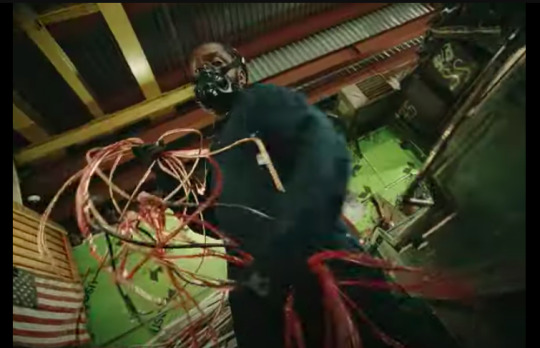
#.
As I write these words, ELUCID steps to me and asks, Fuck you know? What the fuck you know? And I can’t ignore woods telling me, “Don’t try to add on.” They speak for themselves, and yet, here I type. On “Trauma Mic,” ELUCID tells it like this: “Neo-folk: trauma mic: echo chamber: deepfake: / Fake deep: talking wound: say it to my face, nigga!” He tells me that, and I—provoked—tell something back. The lines represent a flourish of mostly di- and trisyllabic metrical feet; anapests pummeling us into submission (“neo-FOLK”; “trauma MIC”; “talking WOUND”). The bars hinge on the rollicking good antimetabole of deepfake/fake deep. “Say it to my face” then begs the questions: Which [generative] face exactly? How does the facial recognition software sort through the twill of the mask? “Deep fake” sounds promising, a potential for something empowering. But it’s uncertainty all the way down—a mis- and dis- communication.
“Neo-folk” invokes “the blackest metal,” which ELUCID identified as on “Betamax.” “This a dead church,” he said, labeling his bodily temple, I presume. The Norwegian black metal faithful will recognize the “deathlike silence” of Euronymous’s record label—the deathlike silence of an ear-to-the-receiver hang-up. ELUCID, in appropriating the language of a Nazi-sympathetic muzakkk, excavates the Helvete cellar. He spirals on his square, forcing himself to burrow, burial-style, beneath the concrete basement foundation. ELUCID’s not “fake deep” like so many other MCs; ELUCID is devastatingly sonorous with delphic complexity. Equal parts arcane and A.R. Kane; altered states incorporating incorporeal feels—a Timbs-gaze or dubby gauze: his “echo chamber.”
One senses ELUCID writes these rhymes in runes, reckoning with esoteric sigils and Nazi insignias all at once: a soundclash. The message made manifest in DJ Haram’s pruh-duk-shun. Sonically, “Trauma Mic” is Steve Albini’s spinal column snapping. Pink Siifu wailing as if through an Interfax Harmonic Percolator. Check the Nietzsche neck-snap by way of Damon Young on “Don’t Lose Your Job”: What doesn’t kill you makes you blacker. (Armand Hammer fully realized and revealed as the actual Big Black.) Willie Green dangles the Sennheiser in front of the Orange amp and crushes the vocals to gravel. Filter through: like the “heavy metal speaker” in the Toyota Cressida that woods mentions on “The Gods Must Be Crazy.” ELUCID notes the underpinnings of all nations and undoes your revisionist fuck’ry: No slave, no world; no slave, no world.
WILLIE GREEN:
I think the balance between clear and unclear is essential! That kind of contrast is the basis of my technique. You need the murky to understand how clear other things are and vice versa. Same with clean/distorted, bright/dark etc. Manipulating the contrast between things leads your listeners to understanding without having to be too direct. That said, the anchor to that is always the vocal, especially with artists like this where the lyrics are already so dense. I have to give people a fighting chance to understand. [The practice of running the vocals through guitar amps] is as much about the process as the final result. I’ve got lots of distortion plugins and boxes, but sometimes an amp moving air in a room with a mic just feels different. And I can get close more easily with other stuff and no one would question, but I enjoy the process of it. As long as it’s still serving the record, I do some things just to entertain myself, too. It connects me to the music more than just “use this preset and crank songs out.”
Armand Hammer gives to us; we give back to them. Wrong and right don’t follow through; it’s the flow, the pass of the mic, the pass of the pen—the voice-to-text, if you will. Study these dialectics. A unity of opposites co-existing. Coaxial cables wherein forever the twain shall meet. Feel how your “fingers numb, tryna work the light.” Desensitized from gripping that trauma mic. woods equips us with a chainsaw (“Woke Up and Asked Siri How I’m Gonna Die”) and a bandsaw (“The Flexible Unreliability of Time & Memory”) to cut through the noise, the aux cord, the copper speaker wires. We cut through the brain fog—together. Rewiring your brain is a prerequisite. A Philip K. Dick-styled “tele-transmitter wired within your skull.”
There are, and always have been, microphones within the casing of your telephone, of course. That’s the trauma mic: a traumatized mic. A mic that receives everything; a mic that transmits all. Not simply the fiendish pleasures Rakim expounded years ago—microphone as lethal weapon, or as phallus, or as master of ceremony means—but an oath, a debt owed, a magisterial instrument built of slave labor electronics and barbarism.
When Alexander Graham Bell completed the first call from New York to San Francisco, Eula Biss notes, it required 14,000 miles of copper wire and 130,000 telephone poles. That’s a lot of gallows and rope, if we fixate on the figurative. You can see woods and ELUCID winding the scrap copper in the Henry and Tim Blake Nelson-directed “Trauma Mic” music video. Coils are connections, are conductivity. When “Jim,” the protagonist of W. E. B. Du Bois’s “The Comet” (much more on this story momentarily), returns to his place of employment—a bank—he finds it in ruins: “Great, dark coils of wire came up from the earth and down from the sun and entered this low lair of witchery.” ELUCID and woods are a twisted pair of the occultish double consciousness. I find it difficult not to think of Coil, the British post-industrial band. Surely, ELUCID and woods have determined to adopt a similar ethos as John Balance and Peter Christopherson as they worship the glitch on WBDTS. Coil’s “Who’ll Fall” contains a nightmarescape of telephone sonics and an answering machine message telling of a friend’s grisly suicide. The person leaving the message struggles to make sense of the death—it doesn’t compute. He’s reaching out: We don’t really…connect.
Armand Hammer want to unravel the coil as much as they want to gather it. As ELUCID puts it, “[WBDTS] is sprawling and fits into the idea of a secret network, [a] secret economy—so the songs have a winding kind of feel.” On “The Outernet” from 1997’s Overcast! EP, Slug explored a similar terrain. Let’s network, let’s all work, he rapped—one track of his vocals, appropriately, delivered with a whisper—so we can build the overall network. ELUCID and woods have been networking with seldom a hiatus for the better part of two decades. It was Uncommon Nasa’s annual Yule Prog event that initially brought ELUCID and woods together, and Nasa’s 2014 album New York Telephone featured them both. On the titular song, Nasa rhymes beside Yeshua, splicing wires together with the pre-millennial New York underground. “Hang up that payphone or you might get struck by lightning,” Nasa cautions, and Yesh’s verse is even more vigilant: “They’re saying it bakes our brains, radio waves, / And the way we’re all slaves to a monkey plan, I’ll be damned.” Paranoia or perception? (as another song on the album puts it)—but Messiah Muzik’s phone interludes on the album help pull us past panic and learn to love the drone. As the old New York Telephone TV ads said: We’re all connected…

And it’s all coming together. ¿Tu tienes WiFi? CONNECTIVITY. Reaching out to build what’s within. Whether it’s a call to Shabaka Hutchings, or Adi Meyerson, or Jane Boxall, or Abdul Hakim Bilal, or Hisham Bharoocha—the lines are open. “If it’s up to me, we’d mend the fences,” woods says—in Frostian fashion—on “Landlines.” He rather be codependents—he wants to compose, not oppose. Where ELUCID previously linked to Daniel Dumile as he preached a so-called “gospel of doom” on “Betamax” (another piece of antiquated tech, by the way), the connection transmits clearer on “Y’all Can’t Stand Right Here,” a beg-borrow-steal’d phrase from “Rhymes Like Dimes.” You know what it is: a call-and-response. On “NYNEX,” from Aethiopes, woods, ELUCID, and perennial collaborators Denmark Vessey and Quelle Chris, seemed to sing in chorus, as if affirming one another: Said he had a system…. The system, inarguably, is a system of communication.
In Blues People (1963), Baraka writes of the “long, long fantastically rhythmical sermons of the early Negro Baptist and Methodist preachers [who] sang with such passion and belief, as well as skill, that the congregation had to be moved.” The traditional African call-and-response song “shaped the form” of this worship. “The minister would begin slowly and softly, then build his sermon to an unbelievable frenzy with the staccato punctuation of his congregation’s answers.” He may as well be talking about ELUCID’s liturgical flow.
Thomas Edison once said (as Granville T. Woods turns over in his grave) that the telephone “annihilated time and space, and brought the human family in closer touch.” In light of that, we can understand the collaborative spirit of WBDTS. To quote ELUCID again: “This sort of reverse engineering of talented players who met for the first time in the studio jamming to pre-recorded beats before splintering off into new directions. Being in the room quietly watching four people fumble around each other’s sonic worlds before finally locking into a solid groove was a clear and obvious magical moment.”
#.
JANE BOXALL:
Communication is distance—the components of a drumkit (cymbals, snare drum, toms/kick) have roots on three continents. Percussion instruments point to places, communicating with the past and the mileage between points. Drums are a pretty durable form of long-distance communication. Sounds with deep, lost archives and antecedents. Communication is signaling. I’m currently finishing medic school, and the more I learn about the organ systems of the body (and their ways of failure), the more I appreciate and fear their interconnection. Drums and percussion are organ systems, too. Marimba is probably the guts of the operation, winding through its wooden octaves, buried under the instruments that sit at the surface of the sound. Vibraphone’s the skin swelling and softening; tank drum the elbows and knees—clanky, good for only a few maneuvers. Even if the collaborator is a beat, there can be a telepathic level of communication, reciprocity, a squaring of the individual powers. The low end of the marimba is wide as my wingspan, the bars paper-thin. The high end is hand-width targets, thick and stub-sounding. These extremes of register can communicate, counterpoint, obfuscate, or bolster one another. The marimba’s basso-profundo is fundament, the vibraphone’s skittering high register is firmament. Marimba, in particular, is stealthy—in most recorded contexts, it’s felt, not heard. I’ve recorded marimba on entire albums where you wouldn’t know it’s there unless you went looking—it’s the insulation in the walls. Marimba is only exposed for a moment on WBDTS, but it runs through much of the subsequent track. And yes, I’ve heard that direct communication is allegedly better than passive-aggression. But I still love how marimba can slither semi-anonymously around behind the bolder sounds, saying something via insinuation.
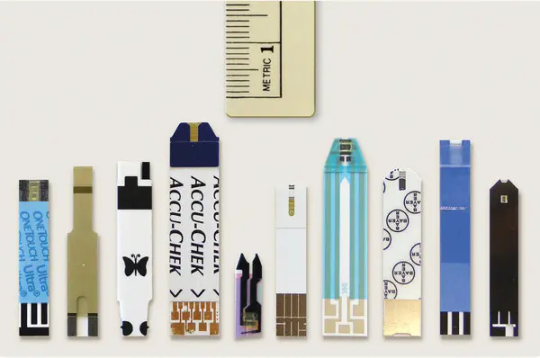
#.
How do you say you’re okay to an answering machine?
—The Replacements, “Answering Machine” (1984)
On “Niggardly (Blocked Call),” we find ELUCID gutted by a relationship in collapse. “What ever happened to not caring?” he asks. He frets about “30 missed calls” and a “blocked call” and a “voicemail that still hit[s]” where it hurts worst. Channels of communication seem to assert themselves, but he appears to want none, nil, nought. It “shouldn’t be this hard,” he says, “we’re not splitting atoms.” ELUCID retreats, plays Main Source’s Breaking Atoms in his earbuds as an escapist way-of-dealing, all while Looking at the Front Door. [T H R E S H O L D]. On “Irreversible, Devil” from King Vision Ultra’s SHOOK WORLD earlier this year, ELUCID [en]chanted: A beginning doesn’t need an ending, only a portal. In Christopher Harris’s 2000 film still/here, we become witnesses to the devastated landscape of postindustrial St. Louis. At one point, the camera settles on a gash-like opening—a portal—in a brick wall: the result of crumbling mortar. Throughout Harris’s film, a telephone rings hauntologically, chronically, diegetically—no one’s answering.
On the chorus, woods is “admittedly niggardly”—said with a smirk—as he declines to even communicate “bad energy” to his opps (harshing that vibe, bruv). He’s been influenced by ELUCID’s concurrent embrace and dismissal of the language of the occult, be it witchcraft, Crowley tracts, or Tarot card readings. woods, like Durkheim, dismisses charismatic magicians as conmen, cultivators of clientele. He alone might be responsible for casting off the customer base at Catland, gentrified Brooklyn’s “favorite little witch shop,” which closed at the end of this summer as scores of calls were pouring into the WBDTS hotline. woods eats knowing he’s “starving [his] enemies,” claiming to take “no pleasure” in it as he sips his bittersweet apéritif.[8] Forget cold-hearted, woods’s “heart pump[s] ketamine” as he k-holes down Flushing Avenue. He walks through the necropolis, hellucinating, having become a numb and distorted Perceptionist. (“Admittedly niggardly” is Black Dialogue scratched and warped as if by Fakts One).
woods keeps walking, but now he’s got purpose. He’s delivering a package, navigating to his destination. “All I had was an address in Maspeth,” he raps before conceding, “I know that’s not really the address.” The subtext, though, is that he does know the location. Once the drop is complete, he can return to the safety of his home, the domestic bliss we were allowed access to on “As the Crow Flies” from Maps. “I write when my baby’s asleep,” he reveals, “I sit in the room in the dark.” He meticulously rattles off every intimate detail:
I listen to him breathe,
I walk him to school, then the park—
hold they little hands when we cross the street.
I think about my brothers that’s long gone and this was all they ever dreamed.[9]
Though he’s set adrift on memory bliss, woods compares what he’s got to what others don’t. He sees a fiend—an inexplicable survivor of COVID-19—who’s almost analogous to himself, a familiar if we want to be Macbethian about it. But woods is decidedly not the fiend. He revels, almost sadistically, in his good fortune: “I have to admit I enjoy watching you wander the wilderness, / You betrayed your brother, burnt every bridge, / When your end come, you’ll be alone.” woods looks upon his Cain-like brother, but it’s only a “peep”—a quick glance. He’ll sleep soundly, peacefully, “knowing these niggas is dead to [him].” When the phone rings in the night, he’ll “actually answer…just to drink your pain.”

#.
In Yellow Back Radio Broke-Down (1969), Ishmael Reed’s Field Marshall Theda character is startled as a page barges into his room: “Hey fuck-face Doompussy, whatever your name is.” Theda is aghast: “Why I never. Who gave you this address? I told them to never give out this number—why this is one of the few luxuries I have in this life…”
#.
ELUCID wears a “camouflage vest” to cross boundaries undetected on “The Gods Must Be Crazy,” to allow for liminal wanderings and trespasses. He utilizes his “third and [his] fourth eye” to “spin out in every which way,” omniscient. Wormhole wayfarer. For every threshold, for every portal, ELUCID has “been through” and “been inside.” His mind, as woods suggests, is “cracked open, seeing all the patterns.” We’re where “anything can happen if you tryna make it happen.” Wyclef’s carnival, maybe. Say what, say what, anything can happen when the history of civilization is an amphetamine-fueled warehouse rave with a fog machine thrown into overdrive. A carnivalesque, where under each tiny leaf this forest of dreams, the fruit which the future will harvest lies hidden. This entire album is a golden bough. (That’s me masquerading as Bakhtin, if you must know.) As if a projection on a screen in the Museum of Natural History (with your eyes glassy from the pain pills), woods drags us past “oracles and seers,” “madmen squatting in caves,” Bushmen “watch[ing] the world come off balance,” “hunter-gatherers watching black giants walk out the jungle,” and “aliens in spaceships.” We watch the ancestors watching the next civilization be born. We’re “invited to the christening,” just so long as we too understand our existence as “men pregnant with death.” Wyclef told you! When you got the skully to your face, anything can happen. “A face behind this mask behind this face,” ELUCID repeats as a round on “Switchboard,” as a gyre widening. He represents (represent, represent!) “so many people at the same time.” He puts the M-to-the-A-to-the-S-to-the-K ’pon his face just to make the next day. “The mask is related to transition, metamorphoses, [and] the violation of natural boundaries,” Bakhtin writes. “It contains the playful element of life; it is based on a peculiar interrelation of reality and image, characteristics of the most ancient rituals and spectacles.”
#.
On “Y’all Can’t Stand Right Here,” ELUCID chants What kinda world? as he revises Nas’s “If I Ruled the World (Imagine That)” into a more communistic vision, something more utopian. Where Nas offers “black diamonds and pearls” via Lauryn Hill, ELUCID proclaims “the mangoes were free.” While Nas speculates what it might be like “if coke was cooked without the garbage,” ELUCID celebrates the fact that the drugs in his paradise “was clean.” Nas wants to “turn trife life to lavish,” but ELUCID prefers to implement a world built on comfort and contentment rather than extravagance. He agrees that “the first shall be last,” but Matthew 20:16 probably didn’t foresee such excesses as Nas’s street dreams of “dime sexes and Benz stretches.” ELUCID calls for “no tax for the rest of natural Black life,” hoping to reduce the economic burden on a race of citizens who are disadvantaged at every turn by the tax code, property laws[10], right on down to neighborhood price gouging and payday loans. In ELUCID’s kind of world, people aren’t data points on a misery index. The mental toll is mitigated with free psychotherapy, which Nas also acknowledges, albeit briefly. It’s the “many years of depression [that] make [him] vision / The better living—type of place to raise kids in.” Nas’s vision, though, isn’t as incisive as ELUCID’s. ELUCID penetrates with what media studies scholar Jayna Brown calls “the force of black speculative vision.” Such a Visionary that you think he’d have Rhettmatic on the cuts.
Nas’s song—a song that mines the riches of Kurtis Blow’s “If I Ruled the World” (1985) and the Delfonics’ “Walk Right Up to the Sun” (1972)—is one of triumphant, if not naive, hope. Jayna Brown, though, doesn’t see utility in hope. “Hope yearns for a future,” she writes. “Instead, we dream in place, in situ, in medias res, in layers, in dimensional frequencies.” Count ELUCID as one such dreamer.
Though he uses the past tense in his verse, intimating that this utopian vision might already be behind us (which would be a tragedy of cosmic proportions), ELUCID is, perhaps, simply looking backward, as Edward Bellamy might say. Tense, as a grammatical structure of time, might be meaningless. ELUCID’s utopia is always-already happening. “Here and now, the past been fucking with me,” he raps on “Empire BLVD.” Jayna Brown feels the same way. Like Nina Simone, Brown is anti-postponement; she opposes the then and there.[11] “I argue for a spatial/temporal fold within the here and now,” she writes. Brown looks to “versions of utopia” that “radically disrupt the very idea of the future.” Or, in woods’ words on “Empire BLVD,” “retrofitted the futures.”
Brown asks that we “tune into an alter-frequency,” one suitable to a time and setting that is—to quote June Tyson—after the end of the world. Don’t you know that yet?
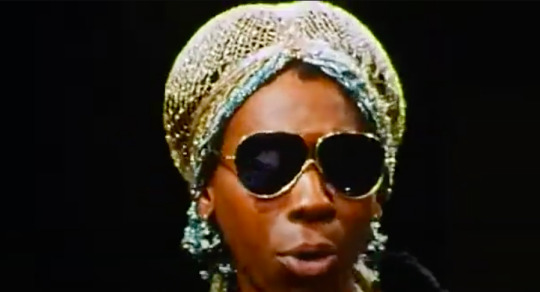
#.
STEEL TIPPED DOVE:
I engineered the vocal recording for a majority of woods’ parts, maybe two or three of ELUCID’s. I think the first one I did was “Landlines.” woods brought that beat through to my spot, recorded over it, and let me in on his plans with Chaz to make the album. [He] slowly but surely would come over with different beats and lay tracks down. Early on I heard of the studio recordings with the instrumentalists and thought that was such a dope idea, but by that point I was already submitting pre-made beats. Eventually woods let me know that not only was Chaz fucking with one of the beats I made but so was Junglepussy, and that had me hyped because she’s an incredible rapper. My beat was samples from Conexion’s “Hello My Friend.” It’s basically the first time I’ve had a sample cleared. Once that beat was chosen, I think woods wrote his part first. Then him and ELUCID came by my spot with Junglepussy. She laid down her part, and then Chaz did his at home or with Green maybe. Then to top it all off, eventually Pierce [Jordan] from Soul Glo got on the song and rounded out the end piece. Oh, and also, Fatboi Sharif has some vocal yells in the part between Junglepussy and ELUCID.
FATBOI SHARIF:
Me and ELUCID was in Dove’s studio and he just asked me to lay […] a backing vocal. He already had the idea of exactly how he wanted it to sound. I yelled “by the blood.”
MESSIAH MUSIK:
My contribution was pretty minimal having done the last 45-seconds on “Y’all Can’t Stand Right Here.” I wish I’d have thrown a few more things against the wall in retrospect. woods and ELUCID hit me with the files from the live sessions, and I made some attempts, but, more than anything, I [was] blown away by the creativity of the other producers and what they were able to bring out. But I was going through files and I think a lot of the stuff I made from the live recordings is better than I thought at the time, probably should’ve shared more just in case.
#. “THE END” IS A SIX-LETTER STORY
Then he started up the street,—looking, peering, telephoning, ringing alarms; silent, silent all. Was nobody—nobody—he dared not think the thought and hurried on.
—W. E. B. Du Bois, “The Comet”
Jim, the protagonist of Du Bois’s short story “The Comet,” is a lowly bank messenger. The bank president asks that he “go down into the lower vaults” to organize volumes of old records, a menial task reserved for a Black worker. Dutifully, Jim moves “down to the dark basement beneath; down into the blackness and silence beneath the lowest cavern…he grope[s] in the bowels of the earth, under the world.” As he crosses the threshold from above to below, it’s easy to construe Jim’s journey to the center of the earth as an allegory of underground survival. The subterranean bank vaults are a dingy refuge. As Jim approaches, “the whole black wall swung as on mighty hinges, and blackness yawned beyond.” Ironically, as he “step[s] into the fetid slime within,” he saves himself from the apocalyptic comet.
Emerging from the depths, Jim steps into a world that appears to be a world no more. Like KRS-One, we realize Jim “appear[s] everywhere and nowhere at once.” Everywhere, in the sense that thresholds abound. Nowhere, in the sense that he’s an invisible man. Jim is a stranger in a metropolitan village—as he’s always been—but the doors that were once closed to him by virtue of law are now obstructed by corpses: “In the great stone doorway a hundred men and women and children lay crushed and twisted and jammed, forced into the great, gaping doorway like refuse in a can.” Extricating himself from the dead, Jim finds himself, once again, “outside the world—‘nothing!’”
As he runs into a building on 72nd Street, following the “sharp cry” of someone “leaning wildly out an upper window,” Jim’s strange experience grows stranger as he encounters a white woman. He’s crossed another threshold: “At last the heavy door swung back. They stared a moment in silence. She had not noticed before that he was a Negro. He had not thought of her as white.” As their lives overlap, a Venn diagram of segregation and integration, Jim considers how this post-apocalyptic world diverges from the catastrophe he was living prior to the comet’s impact. “He would have been dirt beneath her silken feet,” he thinks. Like ELUCID said earlier, Jim is sweating through silk as the white woman “stared at him.” Her silken feet—diaphanous and thin, a mere membrane between above & below, white & black, before & after—evoke the ga[u]ze of their shared, surreal experience. The white woman “had been shut up in [her] darkroom developing pictures of the comet,” sparing her life, and that eerie location where colors transform and images appear out of nowhere through the application of ectoplasmic chemicals—hydroquinone, acetic acid, phenidone—feels more than appropriate. The flexible unreliability of time & memory, indeed.
Together, Jim and the white woman venture out into the earth-grave. “In and out among the dead they slipped and quivered,” Du Bois writes, and with such slipstream strangeness, the sky might as well be styling a supermoon.
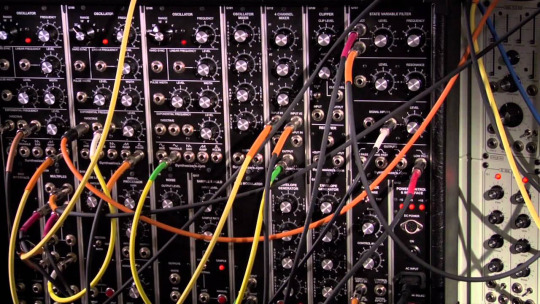
#.
The production on WBDTS emits a “weird radiance that suffuse[s] the darkening world and [makes] almost a minor music,” to return to Du Bois once more. The cadre of accomplished sonic engineers, led by the spectral efforts of JPEGMafia, create an organized noize like an infinite TR-808 clang-a-langing, shaking dungeon walls. I’m left feeling doped up, woozy and brain-numb on narkidrine, the drug used during Quail’s procedure. Willie Green plugs and patches like Johnny Greenwood on the modular synth circa 2000—filenames like Kid A, Kid B, Kid C, etc. and an array of amnesiacs—configuring cyborg brain-stems and plant stems in a merciless hybrid of technology and ecology. Voices “echoed and re-echoed weirdly,” like Jim’s shouts within the bank vaults.
#.
AUGUST FANON:
There is a kind of duality that comes with intently trying to create a certain mood or feeling as a sample-based hip-hop producer in that you are constantly at the mercy of the sample (for better, or for worse). Of course once you learn records, hone in on your sound(s), and sharpen your ear, you can begin to craft beats with a certain mood more readily. I think more aptly I search out for different moods and feelings with intent, but at the same time I’m mindful of staying open to be inspired by a wide sonic range, if for nothing else than the records, mp3s, video, etc. I’m going through will vary wildly from day to day.
I'm constantly sending woods and ELUCID beats with the intent that they will make a song out of it, whether for a specific album in mind or not. Over the years, as various projects of theirs individually or as a group have come up, they might prompt me (email/text) like “August, I’m working on a new solo album, it’s called XYZ.” So I then know that whatever I’m sending over might end up on the record. But since 2017 I’ve been sending them music non-stop. At first, I used to highly curate what I sent over. Then I remember for a spell over the pandemic I was just sending them everything coming out of my machine. But I’d say the last two years I’ve been back to just sending woods and ELUCID very specific beats.
They never specify what they're looking for. I think I saw a tweet from ELUCID one time before I Told Bessie came out and he was saying something about how his next album was going to be “loud.” So in my head I was like, “Okay! LOUD. Boom.” But really, in my head I have a clear conception of what woods, ELUCID, or Armand Hammer sound like as a group and what I can do as a producer to help bring that out.
#.
MESSIAH MUSIK:
I don’t think I typically approach the creative process with an intent to evoke a particular emotion, but a lot of my beats are melancholic. Sometimes I will challenge myself to do things more uptempo or aggressive sounding. I know that my best ones are very emotive whether there was intention behind that or not. As far as communication, there is a lot of trust there. [Armand Hammer and I] have been working long enough that I can’t help but hear their voices in most of what I create. I have like 200 potential Armand Hammer beats on my hard drive ready to go at all times and I’m not shy to send them unsolicited.
#. PUSH BUTTON OBJECTS
As a Black man, ELUCID—like Fanon in Black Skin, White Masks (1967)—announces himself as in “total fusion with the world.” Total. Furthermore, his Blackness is not a curse but a result of the fact his “skin has been able to capture all the cosmic effluvia.” In Black Utopias: Speculative Life and the Music of Other Worlds (2021), Jayna Brown explains that Sun Ra offers an “alternative ontology,” and ELUCID has inherited the schematics. On “Total Recall,” ELUCID serenades: If you push that button, yo’ ass gotta go. He lifts-off from terra firma by lifting the line from Sun Ra’s “Nuclear War” (1984). ELUCID arkestrates his own exodus. He presses all the right buttons, but he walks the “left-hand path, / Rocking haint block blue.” ELUCID distinguishes himself from Aleister Crowley, though. He’s more of a celestial Sun Ra descendent than a dour Crowley acolyte. More of a golden disk than a Golden Dawn. More sequined purple stars on a lamé-evoking fabric than a leopard pelt.[12] Buttons are constantly pressed, jammed, or smashed on WBDTS. Pressed buttons don’t always achieve desired results, though.
#.
“Giz wetwa wum-wum wamp,” the phone mumbled.
Total Recall, the Paul Verhoeven sci-fi film from 1990, is based on the Philip K. Dick short story, “We Can Remember It For You Wholesale” (which has a clear We Buy Diabetic Test Strips ring to it). It’s a story about convincing yourself something happened even if it didn’t, or did. Douglas Quail wants to visit Mars. He approaches “REKAL, INCORPORATED” and “walk[s] through the dazzling polychromatic shimmer of the doorway.” He tells the receptionist he’s there “to see about a Rekal course.” She corrects his pronunciation: “Not ‘rekal’ but recall.”[13] McClane, the senior Rekal doctor, accepts Quail’s money and “press[es] a button on his desk.” McClane and company proceed to program an artificial memory—an “extra-factual memory”—on Quail’s behalf. Rekal, Inc provides Quail with “[o]dd bits which made no intrinsic sense” but could be “woven into the warp and woof of [his] imaginary trip” to Mars, including a “wire tapping coil.” Forget shuffling, the mortal and copper coil keeps coiling. “We Can Remember It For You Wholesale” gets close to what Mark Twain explored in “Mental Telegraphy” (1891), namely, the “phrenophone.” Twain’s mind-phone wasn’t intended to connect individuals to experiences they desired through manufactured memory but rather to establish the “rapport between two minds.” Twain believed “the telegraph and telephone [were] going to become too slow and wordy for our needs.” He saw the limits of telecommunications and speculated where we might move next—“a finer and subtler form of electricity,” the type of galvanic musical breakthroughs the WBDTS players experienced in their sessions.
#.
KENNY SEGAL:
Since WBDTS was being made as we were finishing up Maps, I was actually talking to woods almost every day at the time. [woods and ELUCID] gave me one of the live sessions and said to sample that. I made three beats with it, two of which appear on “Total Recall.” They chose the main beat to write a song too, but then I was like, “This [other beat] sounds dope as an intro.” I definitely try to communicate a vibe or emotion with a beat. Sometimes it’s very intentional, but other times it’s totally intuitive. Depends on my mindstate at the time, I guess.
#. TELEPHONOPHOBIA
Respond as you would to the telephone, for the call of the telephone is incessant and unremitting. When you hang up, it does not disappear but goes into remission.
—Ronell’s “User’s Manual”
Jim and Julia (the white woman) run around the city looking for signs of life. Jim suggests they try the central telephone exchange. Desperation overcomes Julia: “[She] leaped to the door and tore at it, with bleeding fingers, until it swung wide.” She settles at the apparatus before her in all its erotic grandeur:
The grim switchboard flashed its metallic face in cryptic, sphinxlike immobility. She seated herself on a stool and donned the bright earpiece. She looked at the mouthpiece. She had never looked at one so closely before. It was wide and black, pimpled with usage; inert; dead; almost sarcastic in its unfeeling curves.
It’s difficult not to view the switchboard as some kind of miscegenation machine, what with its personified qualities (the mouthpiece, metallic face, pimpled) and death mask visage.
Julia calls out hello in “low tones”: “She was calling to the world. The world must answer. Would the world answer?” She gets no response. “At indicated times,” Ronell writes, “schizophrenia lights up, jamming the switchboard, fracturing a latent semantics with multiple calls. You will become sensitive to the switching on and off of interjected voices.” For Jim and Julia, though, only their voices are heard, echoing back. “What was that whirring?” Julia asks. “Surely—no—was it the click of a receiver?”:
She bent close, she moved the pegs in the holes, and called and called, until her voice rose almost to a shriek, and her heart hammered. It was as if she had heard the last flicker of creation, and the evil was silence. Her voice dropped to a sob. She sat stupidly staring into the black and sarcastic mouthpiece, and the thought came again. Hope lay dead within her.
No one responds. Their message goes unreceived. The phone keeps on ringing. Death, the leveler!, Jim mutters. And the revealer, Julia whispers.
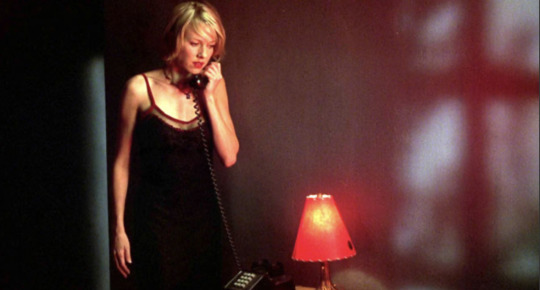
#.
It’s strange to be calling yourself.
—Betty Elms, Mulholland Drive (2001)
The switchboard should usher in hope for communication, for connectivity—but it doesn’t. For Jim and Julia, the switchboard proves a terminus, as it does for woods on “Switchboard.” “I can’t see it yet,” he says, opacity wherever his eyes settle, “but something’s coming.” wøods is full of fear and trembling, his stomach in dredknotz. Seeking comfort, he “slept buried in her shoulder blades [with] one hand on her stomach.” Buried keeps us on the other side of those cemetery gates but contrasts with the pregnancy implied by resting his “hand on her stomach.” woods makes mention of men “pregnant with death” on “The Gods Must Be Crazy,” and the paradoxical phrase works perfect for someone feeling their mortality tested postpartum. I watch him grow, wondering how long I got to live.
The threshold between drowsy sleep and stirring to wake seems to be where more than a few woods verses writhe and wiggle of late. On “Switchboard,” he “wake[s] running” with a “scream wedged in [his] windpipe.” Let him clear his throat as he meanders somewhere between Oedipal arousal and he Ed Lover dance in GIF form, endlessly looping to DJ Mark the 45 King’s “The 900 Number.” His mind’s not right. He “fell asleep trying to write and woke to the beat bludgeoned.” Violence in the sheets—shoulder blades, bludgeoned beats—tossing and turning in the graveyard grass. He feels the noise of the beat “in [his] teeth like electric current circuits circling”—the harsh c’s, r’s, and t’s hurting, grating on the nerves repeatedly, seeing as how circ- means “around,” forming a “ring”: ring, ring ring (ha ha hey). As such, woods brings it back around with “circling buzzards,” which rasp like buzzers—a network crash, an interference—as they plunge beak and talons into carcasses. It’s awful, offal.
woods looks at his phone and sees “missed calls from [his] own number”—we’ve slipped again. Sleeping woods smothers his face in a surrealistic pillow and embarks on an embryonic journey. Logic and proportion have fallen sloppy dead. The men on the chessboard on the cover of Liquid Swords get up and tell him where to go: “ a long hallway” and into “the room where you identify your mother.” woods shifts to the second-person now, because there is a second person: you. We’re with him in the dream, the nightmare, the morgue with the mother-corpse. You dispel her naked and expired image by supplanting it with your partner; you “go back home to your lover.” Hysterical in the truest sense—a womb-suffering (maybe this is what ELUCID meant by womb-pit)—ranting and repeating: How many times can you tell her that you love her? Questions don’t have answers. “Why the cellar door open when it wasn’t?” Well, nothing’s happening as it should. Thresholds open and close at random. Gusts of wind and ghosts. Dog at the front door barking at the air. The phonaesthetic pleasures of cellar door don’t sooth but scare. It’s probably a trap.
woods returns to nature to find peace. He “rake[s] leaves in the evening [and] smoke[s] a little weed in the back of the trees where they can’t see in.” They being whoever has infected his brain with devils. He obstructs their vision, but he’s seeing his own “breath leaving.” His “fingers freezing” in this cold spot. If only he had a ululometer![14] woods tries to be practical, sensical, attributing the temperature to climate change (I swear there used to be different seasons), but then he hears a chuckling voice say, You’re pretending to be grieving. The stability and serenity he seeks outside is disrupted just as it was on “Landlines.” There he fantasized of buying a home where he could “sit on the stoop” and listen to the “night breeze catch the trees.” Struggling to articulate it, “feeling some type of way,” he envisioned his “family under one roof” but heads back inside when he “hear[s] ’em start to shoot.” Tragedy’s never far off.
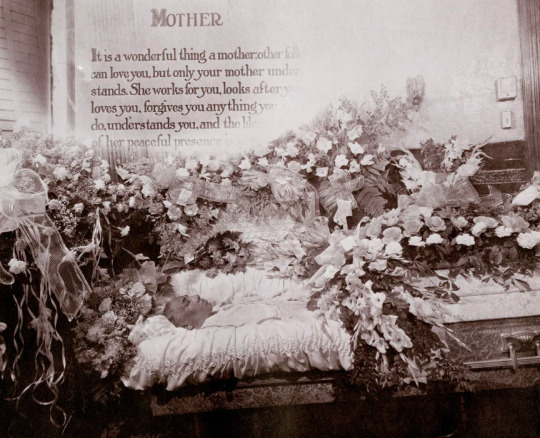
#. YOU GOTS TO CHILL
From a timeworn copy of Death Rituals and DIY Burials, a zine cut-and-pasted together by one “India” in July 2000, I know of “The Wheel of Death,” an inked image coupled with a quotation from Chuang-tzu: Birth is not a beginning; death is not an end. In Toni Morrison’s foreward to The Harlem Book of the Dead, a collection of funeral portraits by renowned Harlem Renaissance photographer James Van Der Zee, we learn that funeral rituals in early 20th-century Harlem were “parallel[ed] with those of the ancient necropolis of Egypt. They are in the continuum of those on the Nile of four thousand years ago.” The gods of today (jeez, they must be crazy), Morrison explains, “have replaced Osiris” (the style wild bastardized). She continues:
Death is the moment called quittin’ time, when we freeze in place like tomb figures or ancient wall paintings or photographs on a mantelpiece in Harlem. Family and friends witness the moment when the preacher sings out the life of the deceased, hoping to distract Satan or Anubis, with his great scale, from weighing the bad deeds against the goods.
“Laid a feather on a scale and ripped my heart out—weigh it up,” ELUCID spits on “Niggardly (Blocked Call)”. woods’ “Switchboard” verse is as disquieting as these Van Der Zee funeral portraits. Ectoplasmic visions aren’t a prerequisite, though; we can get the chills from a disembodied voice. woods is chillin’; Chaz is chillin’—what more can I say?
#. STONE TAPE THEORY
...telepathy, and even clairvoyance, are not inconceivable in this day of the wireless telephone, the proved existence of those mysterious rapid vibrations of the ether of which, as yet, we know tantalizingly little…
—Fremont Rider, Are the Dead Alive? (1909)
The quartz crystals in your iPhone attract ghastly presences, so of course woods was ready on “FaceTime”: “My evil eye ward off hex, though—FaceTime declined.” Listening to WBDTS (and I do assume you’re listening closely) is, in large part, like listening to EVP (electronic voice phenomena). As amateur paranormal investigators, we lend ears to any unorthodox frequency or outré fragment—glitches in the matrix. On “The Flexible Unreliability of Time & Memory,” ELUCID calls back to “Old Magic”[15] to activate a “double portion of protection”—a Blackness guarded by Pan-Africanist parades and black-mirrored screens encased in OtterBoxes. Diasporic problems and dial-toned. What doesn’t kill you makes you Blacker.
“Woke Up and Asked Siri How I’m Gonna Die” is a system update for Muriel Spark’s Memento Mori (1959). “One can’t be cut off perpetually,” Dame Lettie Colston says in Spark’s novel. “One must be on the phone. But I confess, I’m feeling the strain…. I never know if one is going to hear that distressing sentence.” The sentence that’s communicated to Dame Lettie through the receiver? Remember you must die. The message is delivered by a sort of voice of God—not so much a telephone (though the timbre of God’s voice does seem to travel from a great distance) as a theo-phone.
We normalize phone usage until our technology turns on us. A telephone rings and we used to come running. Before the advent of caller ID, we had no idea whose voice would be on the other end. Techno-spiritualism would have us believe voices from the dead screech and squeal through. Fallen copper wires drape over tombstones and our cobwebbed ears hear them sizzle. woods’ verse on “Woke Up and Asked Siri How I’m Gonna Die” feels mediumistic—a knack for channeling staticky transmissions, learned from ELUCID. He links “fresh wounds and old scars” and works a graveyard shift.
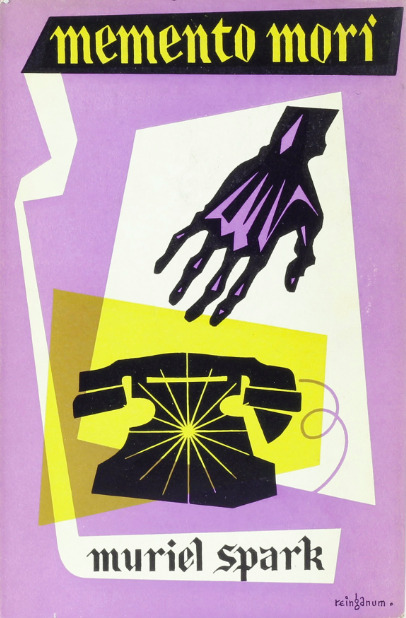
#.
“You can’t stop the prophet,” ELUCID raps on “The Key is Under the Mat,” echoing Jeru. Surely as the sun rises in the east, it sets in the west. But ELUCID feels “a stranger at home,” dissociated, lost. He says we “don’t know [his] name,” and when we geolocate him, he’s not at Hoyt and Schermerhorn at three on the dot, but some otherwhere—some otherground, as Open Mike Eagle says—a stranger in the village. Jimmy Baldwin comes through that door, and speaks of the antipathy experienced by a Black wanderer, of being called “le sale negre,” accused “of stealing wood.” ELUCID “snatch[es] embers to hold in [his] pocket, / Soot on [his] fingers.” He feels the hostile eyes on him, as if he snatched a purse—what Baldwin called eyes with “paranoiac malevolence.” ELUCID’s European vacation…
In a manner we’ve grown accustomed to as listeners, woods travels through time and space in the span of a single verse. In a matter of measures, he teleports from the Valley of Death where he walks “in the shadow,” to sailing on the seas of antiquity where he hears a “passionate siren song,” to the mountaintop with Marvin Gaye and Tammi Terrell in his headphones, to the far reaches of our solar system, to “gaseous planets [and] ice giants,” and it all culminates in a crash-landing “back to Earth.” He’s ostensibly everywhere but always in-between—Jerusalem and Jericho, Italy and Sicily, exosphere and outer space. He achieves this because he knows “the key is under the mat,” granting him access, and offering it to us as well. From the humble confines of an apartment rental—a fleeting habitation in one’s life, as ephemeral as “that security deposit [that] ain’t comin’ back”—opens its door, widens its threshold, to harbor “excavated artifacts” housed in a humble “hall closet, boxed and stacked.” The scope moves from incommodious to quantum and back again. It’s a liminal slinking where both better angels and “demons lurk”—it’s strait gangsta.
#.
Truth is blurry on a cracked screen when we travel through thresholds. Sources once thought reliable crackle and hiss. Authenticity looks awkward. ELUCID’s “xeroxed visas” raise concerns. The haze that hovers over “CIA scams” and “revolutionary plans” settles onto woods’ face like a ski mask. Deceivers and cheats and the “not-so-secret police visit your home.” Escape routes re-route. “Exit door at the club from nowhere,” ELUCID explains, “way out in nowhere.” Thanks for the help. I’m “out here in the pixels” with him. Is it okay, or is it over? Julia looked at Jim and “realize[d] she was alone in the world with a stranger…a man alien in blood and culture—unknown, perhaps unknowable.” For all his efforts to save a white woman, the still-spinning world threatens to lynch him. “There’s no comfort in fact sometimes,” ELUCID says on “When It Doesn’t Start With a Kiss.” “True story,” woods says in the same song before relating an account of how he “forgot four zips in the laundry.” And, I suppose, we should believe him (he did say true story, did he not?) considering how he was “sweating” and “fearful,” so much so, apparently, that he rhymes laundry with laundry, sacrificing any razzle-dazzle rhyming in favor of veracity. Meanwhile, AZ literally launders money—ironing and clotheslining bills upon bills—in his safehouse. “I have both memory-tracks grafted inside my head,” Quail tells his wife, “one is real and one isn’t but I can’t tell which is which.” Did he go to Mars or not? Is WBDTS a companion piece to Neptune Frost—yes or no? woods “toss[es] ricin in USPS for the excitements” and the Feds intercept the package. “Name your opps without saying ‘the System,’” ELUCID tells us, because “specificity matters.” woods already told us on “Black Sunlight” that he finds our “politics absurd.” Never mind the nebulous, bumper-sticker, lawn sign resistance signaling. Translate the scrambled messages, is what I mean. (What do I mean?) “I mean, I mean…amen,” ELUCID sayeth, elusively.

#.
Let the telephone ring, please. Let there be somebody to call up and plug me into the human race again. Even a cop…. Nobody has to like me. I just want to get off this frozen star.
—Raymond Chandler, The Little Sister (1949)
Certainty is a circle—I don’t believe you. ELUCID handles hecklers who would dare to call him Judas. A circle isn’t certainty—that’s the paradox. Nothing ends. No one gets closure. The form might more closely resemble “overlapping Venn diagrams overlapping.” The “translator[’s] unsure,” as woods said on “Venn Diagrams” from WHT LBL. Take “good fortune as an ominous sign.” Will the circle be unbroken? By and by; bye-bye. “Seasons passed,” ELUCID raps, but “cyphers never completed.”[16] This is where ELUCID dwells. Manning the “Switchboard,” he “thought [he] knew but not for certain.” The face behind the mask. “She say she saw my other face when I’m inside her,” he says, but that’s he-say, she-say, which may as well be hearsay (or even a heresy). We find ourselves in the midst of a tryst. “I looked around, wiping my saliva,” ELUCID raps, documenting every infinitesimal detail. We must’ve dialed *69 on accident. “Who’s that peeking through my eye-slit showing up unannounced?” he wonders. It’s us that wandered in. The “eye-slit” shows the breakthrough of a barrier. We’ve crossed the threshold. We’re there with him. What do we say when he splits himself and sees us? Which side are we on?
What the artists mean and what they don’t does and doesn’t matter. Yes, woods insists his “record speak[s] for itself” and we shouldn’t “try to add on,” and yet Reddit posters, YouTube commenters, and Genius annotators alike have at it, albeit haphazardly and half-assedly. As the rep grows bigger, the fan impulse to own the artist—and the artist’s meaning—increases. In a New York Times piece about his 2020 novel Telephone, Percival Everett eagerly defers responsibility to his audience:
I’m interested not in the authority of the artist, but the authority of the reader. I certainly know that many people will not see what I saw. And many people will see different things from each other…. If somebody says, “Did you mean this something?” I always say, “Yes.”
Bodies block the threshold. Lies are repeated until taken as truth. Access is granted but then reneged. Like a game of “telephone,” meaning is misconstrued. These are the ill communications within Armand Hammer’s We Buy Diabetic Test Strips. I keep calling. Did this mean something—anything?

Footnotes:
[1] Meant also in a Claudia Rankine sense of Citizen (2014).
[2] Ronell is an NYU professor and academic who has been scrutinized for her sexual harassment of a doctoral student—and though the university conducted a confidential investigation, leaks of emails and voice messages leave a damning trail of impropriety.
[3] I don't like people playin’ on my phone, see also: Chappelle's Show, “When Keeping It Real Goes Wrong”.
[4] The phone works both ways, as antagonists often say, and so ELUCID credits woods, who corrects and credits Gary Grice, who cleared the sample from Lone Wolf and Cub. So ELUCID is woods is ELUCID is GZA is woods is ELUCID, if I have my equation correct, which I likely do not. The “Root Farm” is rhizomatic.
[5] Like “post-rap,” what does “post-pandemic” even mean?
[6] Sampled by Armand Hammer on “Robert Moses” from Haram.
[7] Even ELUCID’s Dunks are “second-hand,” so he’s not on that white like Othello, as Frank Ocean sings. “All you want is Nikes,” sure, “but the real ones. / Just like you, just like me.” Not an imitation, a pattern repeated, reproduced into replica.
[8] It’s strange—disorienting even—hearing “apéritif” in a rap song, a word that I came across in countless French existentialist novels I read as a young man. Now I’ll be waiting for woods to drop “pince-nez” into a verse so I can also experience the callback to all those Russian novels.
[9] On “Total Recall,” woods shows an example of the bedtime routine gone awry: “My bedtime stories had the kids crying before they got tucked in, / But fuck it—the night dark and full of terrors, / Might fuck around and say ‘Suge Knight’ three times in the mirror.” The threshold between dreams and nightmares has never been thinner, narrower. ELUCID’s got his own bedtime struggles. “Put that baby bitch to bed,” he says, rocking the Ferber Method till the end. Both men, fathers of infants and frequent crossers of time zones, know wake and sleep as porous states of existence. So even after ELUCID “whispers [a] bedtime story [and] lullaby,” he curses the child: “You fuckin’ with my head.” He “can’t feel [his] legs,” stares over at the dresser were Adam Mansbach’s Go the Fuck to Sleep rests, and laughs quietly.
[10] On “Black Garlic,” ELUCID told us—repeatedly—that legalese is designed to overwhelm you. woods seems to chime in during his “Y’all Can’t Stand Right Here” verse when he declares “legalese is abolished.” He’s happy (the Happiest African?) to inform us that the contracts now read “like fucking Archie comics.”
[11] On “Switchboard,” ELUCID adds to the disorientation by saying, “This, that, and the other time.”
[12] For other insights into ELUCID’s magick incantations, peep DOCUMENT xi, Section 31 of A Manual of Exorcism.
[13] Not niggardly, but niggardly.
[14] A ululometer, in the words of its inventor Hereward Carrington: “an intensely sensitive coil of 3,000 finely tuned copper wires which may be set up in a room believed to be haunted, and connected by wires with a receiving apparatus in another room, where the observer listens through telephone receivers."
[15] Yes, I’ve referenced this quote twice, intentionally. Twice the first time, let’s say, like Saul Williams.
[16] Hip-hop orthography, please.
############################################
Images:
The Psychedelic Experience album cover, Leary, Metzner, and Alpert, Broadside Records, 1966 (detail) | “1-800-COLLECT” television commercial, 1996 (screenshot) | De La Soul, “Ring Ring Ring (Ha Ha Hey)” music video, dir. Mark Romanek, 1991 (screenshot) | Julia Cortazár, The Blow-Up and Other Stories, cover, 1968 (detail) | The Firm, “Phone Tap” music video, dir. Nick Quested, 1997 (screenshot) | WHAS-11 news report (screenshot) | We Buy Diabetic Test Strips billboard in Hollywood, CA. Photographer unknown | “Six Labyrinths,” Joe Tilson (1976) | “Trauma Mic” music video, dir. Henry Nelson & Tim Blake Nelson, 2023 (screenshot) | Uncommon Nasa, New York Telephone cassette album cover (2014) | “Various brands of glucose test strips.” New England Journal of Medicine. Appearing in The New York Times. January 14, 2019. “The Strange Marketplace for Diabetes Test Strips.” | Separation of a mixture of two harmonic oscillators and Gaussian noise. | Space Is the Place, dir. John Coney, 1972 (screenshot) | Modular synthesizer. Photographer unknown. | Mulholland Drive, dir. David Lynch, 2001 (screenshot) | "Untitled" by James Van Der Zee. From The Harlem Book of the Dead (1978) | Memento Mori, Muriel Spark, first edition book jacket (1959). | The Firm, “Phone Tap” music video, dir. Nick Quested, 1997 (screenshot) | The Psychedelic Experience album cover, Leary, Metzner, and Alpert, Broadside Records, 1966 (detail)
#underground hip hop#armand hammer#backwoodz studioz#billy woods#elucid#we buy diabetic test strips#zines
17 notes
·
View notes
Text
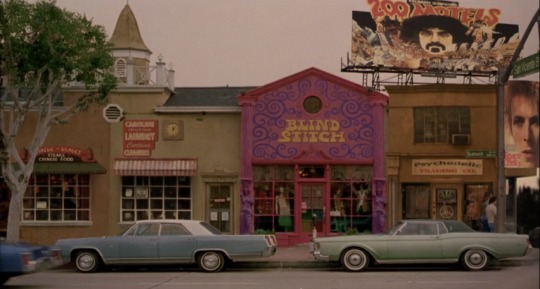
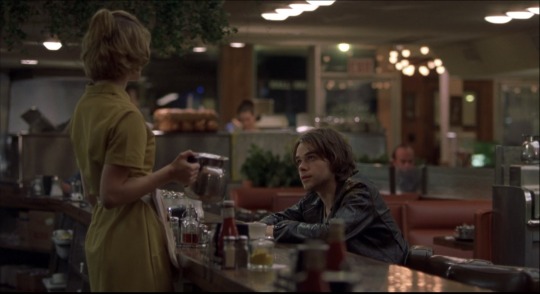

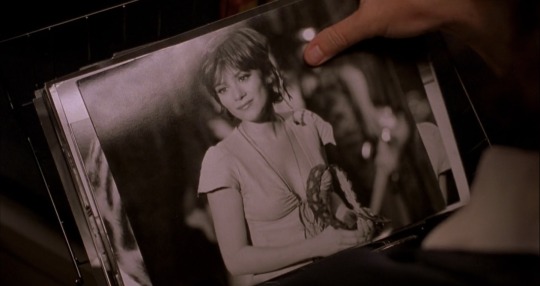
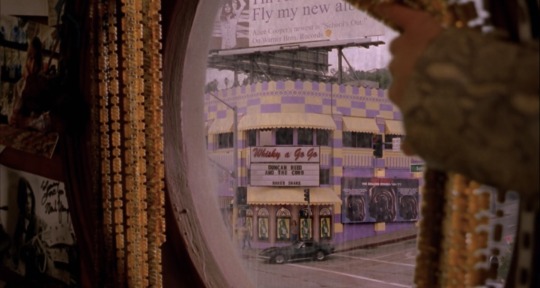

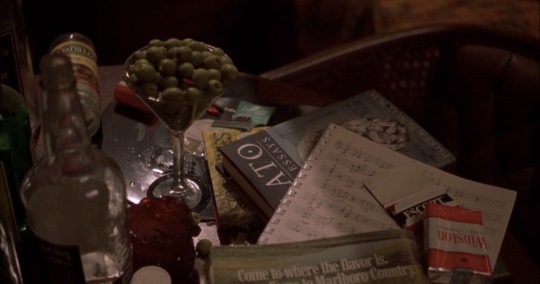
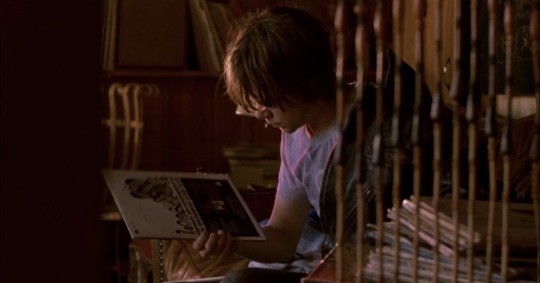
Sunset Strip (2000) dir. Adam Collis
#cinematography#sunset strip#LA#70s#psychadelic#rock and roll#laurel canyon#summer of love#1970s fashion#screencaps#20th century fox#70s cinema
7 notes
·
View notes
Text
to be watched list (series)
#
$#*! My Dad Says (2010–2011)
2 Broke Girls (2011-2017)
3rd Rock from the Sun (1996-2001)
6Teen (2004-2010)
8 Simple Rules… for Dating My Teenage Daughter (2002-2005)
13 Reasons Why (2017-2020)
30 Rock (2006–2013)
101 Dalmatians: The Series (1997-1998)
A
According to Jim (2001-2009)
Adventure Time (2010-2018)
Aladdin (1994-1995)
Ally McBeal (1997-2002)
American Dragon: Jake Long (2005-2007)
Anger Management (2012-2014)
Archer (2009-2023)
As Told by Ginger (2000-2009)
Atypical (2017-2021)
Austin & Ally (2011-2016)
Avatar: The Last Airbender (2005-2008)
Awkward. (2011-2016)
B
Batman: The Animated Series (1992–1995)
Black-ish (2014-2022)
Blockbuster (2022)
Bluey (2018-)
Bob's Burgers (2011-)
BoJack Horseman (2014–2020)
Boy Meets World (1993-2000)
Braceface (2001-2006)
Brandy & Mr. Whiskers (2004-2007)
Broad City (2014-2019)
Brooklyn Nine-Nine (2013-2021)
Buffy the Vampire Slayer (1997-2003)
C
CatDog (1998-2005)
Charmed (1998-2006)
Community (2009-2015)
Cougar Town (2009-2015)
Coupling (2000-2004)
D
Daria (1997-2002)
Dead Like Me (2003-2004)
Derry Girls (2018-2022)
Disenchantment (2018-2023)
Doctor Who (2005-)
Don't Trust the B---- in Apartment 23 (2012-2013)
Drake & Josh (2004-2007)
E
Ellen (1994-1998)
Emily in Paris (2020-)
Everybody Hates Chris (2005-2009)
Everybody Loves Raymond (1996-2005)
Everything Sucks! (2018)
F
Family Guy (1999– )
Fillmore! (2002-2004)
Fleabag (2016-2019)
Frasier (1993-2004)
Freaks and Geeks (1999–2000)
Fresh Off the Boat (2015–2020)
Full House (1987-1995)
Futurama (1999-)
G
Game of Thrones (2011-2019)
Gilmore Girls (2000-2007)
Ginny & Georgia (2021-)
Girl Meets World (2014-2017)
Go On (2012-2013)
Good Luck, Charlie (2010-2014)
Gossip Girl (2007-2012)
Gravity Falls (2012-2016)
Grim & Evil (2001-2007)
H
Hacks (2021-)
Hannah Montana (2006-2011)
Hercules (1998-1999)
House (2004–2012)
Home Economics (2021-2023)
Home Improvement (1991-1999)
Hot in Cleveland (2010-2015)
How I Met Your Mother (2005–2014)
How to Sell Drugs Online (Fast) (2019-)
I
I Am Not Okay with This (2020)
iCarly (2007-2012)
I Love Lucy (1951-1957)
Inside Job (2021–2022)
It's Always Sunny in Philadelphia (2005-)
J
Joey (2004–2006)
K
K.C. Undercover (2015-2018)
Kevin Can Wait (2016-2018)
Killing Eve (2018-2022)
Kim Possible (2002-2007)
King of the Hill (1997-2010)
L
Liv and Maddie (2013-2017)
Lilo & Stitch: The Series (2003-2006)
Lizzie McGuire (2001-2004)
Louie (2010-2015)
M
Mad About You (1992-2019)
Magnum, P.I. (1980-1988)
Malcolm in the Middle (2000-2006)
Man vs. Bee (2022)
Man with a Plan (2016-220)
Maude (1972-1978)
Melissa & Joey (2010-2015)
Mike & Molly (2010-2016)
Modern Family (2009-2020)
Monk (2002–2009)
Mr. Bean (1990-1995)
Mr. Bean (2002-2019)
Mr. Sunshine (2011-2012)
My Name Is Earl (2005-2009)
N
New Girl (2011-2018)
Not Dead Yet (2023-)
O
Once Upon a Time (2011-2018)
P
Parks & Recreation (2009–2015)
Party Down (2009-)
Pepper Ann (1997-2000)
Popeye the Sailor (1960-1962)
Pretty Little Liars (2010-2017)
Pretty Smart (2021)
Q
R
Recess (1997-2001)
Regular Show (2010-2017)
Rick and Morty (2013–)
Rules of Engagement (2007-2013)
Russian Doll (2019-)
S
Sabrina: The Animated Series (1999-2000)
Sabrina, the Teenage Witch (1996-2003)
Sam & Cat (2013-2014)
Saved by the Bell (1989-1992)
Schitt's Creek (2015-2020)
Scooby Doo, Where Are You! (1969-1978)
Sean Saves the World (2013-2014)
Sex and the City (1998-2004)
Seinfeld (1989-1998)
Shake It Up (2010-2013)
Shameless (2011-2021)
Silicon Valley (2014-2019)
Single Parents (2018-2020)
Skins (2007–2013)
So Help Me Todd (2022-)
Space Force (2020-2022)
Speechless (2016-2019)
SpongeBob SquarePants (1999-)
Squid Game (2021-)
Stranger Things (2016-2025)
Studio 60 on the Sunset Strip (2006-2007)
Suburgatory (2011-2014)
Superior Donuts (2017-2018)
Superstore (2015-2021)
T
That '70s Show (1998-2006)
That '90s Show (2023-)
That's So Raven (2003-2007)
The Brady Binch (1969-1974)
The Crew (2021)
The Ellen Show (2001-2002)
The Emperor's New School (2006-2008)
The End of the F***ing World (2017-2019)
The Flight Attendant (2020-2022)
The Fresh Prince of Bel-Air (1990-1996)
The Golden Girls (1985-1992)
The Golden Palace (1992-1993)
The IT Crowd (2006-2013)
The King of Queens (1998-2007)
The Last Dance (2020)
The Legend of Tarzan (2001-2003)
The Little Mermaid (1992-1994)
The Loud House (2014-)
The Neighborhood (2018-)
The New Adventures of Old Christine (2006-2023)
The New Adventures of Winnie the Pooh (1988-1991)
The Odd Couple (2015-2017)
The Office UK (2001-2003)
The Pink Panther Show (1969-1970)
The Powerpuff Girls (1998-2004)
The Replacements (2006-2022)
The Suite Life on Deck (2008-2011)
The Suite Life of Zack & Cody (2005-2008)
The Twilight Zone (1959–1964)
The Umbrella Academy (2019-2024)
The Upshaws (2021-)
The White Lotus (2021-2025)
The Woman in the House Across the Street from the Girl in the Window (2022)
Timon & Pumbaa (1995-1999)
Tiny Beautiful Things (2023)
Totally Spies! (2001-2014)
Twin Peaks (1990-1991)
U
Unbreakable Kimmy Schmidt (2015-2020)
Unstable (2023-)
V
Veep (2012-2019)
W
Web Therapy (2011-2015)
Welcome Back, Kotter (1975-1979)
Wednesday (2022-)
What I Like About You (2002-2006)
Whitney (2011–2013)
Will & Grace (1998-2020)
W.I.T.C.H. (2004-2006)
Wizards of Waverly Place (2007-2012)
X
Xena: Warrior Princess (1995-2001)
Y
Young & Hungry (2014-2018)
Z
3 notes
·
View notes
Text
Cumpleaños 🎂

Feliz cumpleaños número 49 a Sarah Paulson
Sarah Catharine Paulson (Tampa, Florida, 17 de diciembre de 1974) es una productora, guionista, directora y actriz estadounidense. Ha recibido varios galardones, incluido un Primetime Emmy Award y un premio Globo de Oro. En 2017, la revista Time la nombró una de las 100 personas más influyentes del mundo

Paulson comenzó su carrera como actriz en producciones teatrales de la ciudad de Nueva York antes de protagonizar las series de televisión de corta duración "American Gothic" (1995-1996) y "Jack & Jill" (1999-2001). Más tarde apareció en películas de comedia como "What Women Want" (2000) y "Abajo el amor" (2003), y películas dramáticas como "Camino a la guerra" (2002) y "The Notorious Bettie Page" (2005). De 2006 a 2007, interpretó a Harriet Hayes en la serie de comedia y drama de NBC; Studio 60 on the Sunset Strip, por la que recibió su primera nominación al Globo de Oro. En 2008, interpretó a Ellen Dolan en la película de superhéroes negra "The Spirit".
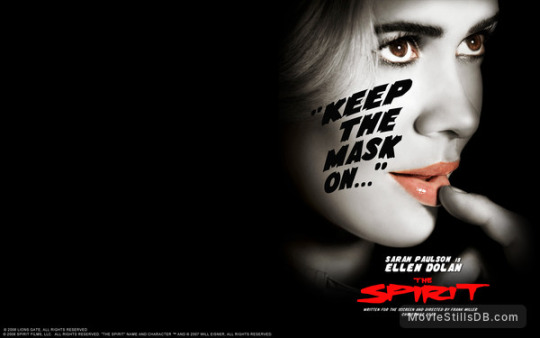
Sus otras películas incluyen "Serenity" (2005), "New Year's Eve" (2011), "Mud" (2012), "Blue Jay" (2016), "Ocean's 8" (2018), "Bird Box" (2018), "Glass" (2019) y "Run" (2020).

En 2011, Paulson comenzó a protagonizar la serie de antología de FX, "American Horror Story", interpretando diferentes personajes en muchas de las 10 temporadas del programa. Por sus actuaciones en la serie, recibió cinco nominaciones a los premios Primetime Emmy y ganó dos premios premios de la Crítica Televisiva. En 2016, interpretó a la fiscal de la vida real Marcia Clark en la primera temporada de la serie de antología, "American Crime Story, subtitulada The People v. O. J. Simpson", por la que obtuvo elogios de la crítica y numerosos premios

Paulson salió con Cherry Jones de 2004 a 2009. En una entrevista con Broadway.com en 2013, refiriéndose a su sexualidad, dijo «la situación es fluida para mí». Antes de su relación con Jones, solo había salido con hombres, entre ellos el dramaturgo Tracy Letts, con quien estaba comprometida
En 2015 hizo publica su relación con la actriz estadounidense Holland Taylor, a quien había conocido en un evento benéfico en una casa. Unos años después, coincidieron en la red social Twitter por mensajes privados y desde entonces siguen juntas.

Paulson pertenece al partido demócrata.
3 notes
·
View notes
Note
23, 33, 47?
23: Sunset Strip by Veeshy, Sonic Youth
33: Stranger Synths by Marvel 83'
47: Wait for Something Better by PROM
Sunset Strip is the one song I played constantly on repeat when I did my first playthrough of Cyberpunk 2077 since it just gave me so many OC emotional ideas for my V, Jim Santos. It has such a cool ethereal feeling to it, and the synth in it is just amazing.
Stranger Synths is a really cool deeper synthwave track that I really like. The vocals in it as well add to the strength and epic sound of the music, and the beat is my favorite part of the song.
Wait for Something better is a good moody song that has a slight early to mid 2000s feel to it that I really dig.
3 notes
·
View notes
Text
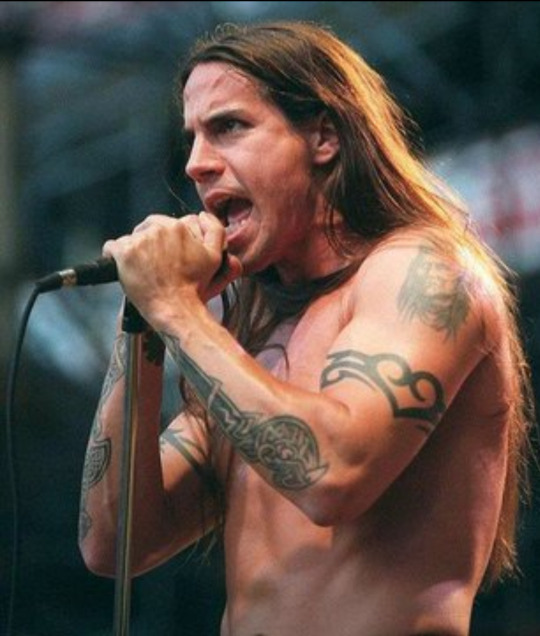
Anthony Kiedis (/ˈkiːdɪs/ KEE-dis; born November 1, 1962) is an American musician, singer, songwriter and rapper, best known as a founding member and lead vocalist of the rock band Red Hot Chili Peppers. Kiedis and his fellow band members were inducted into the Rock and Roll Hall of Fame in 2012.
Kiedis spent his youth in Grand Rapids, Michigan, with his mother, and then moved shortly before his twelfth birthday to live with his father in Hollywood. While attending Fairfax High School, Kiedis befriended students Flea and Hillel Slovak, who were members of a band called Anthym. After high school, Kiedis took classes at UCLA, but dropped out in his sophomore year.
When Kiedis received an offer to be the opening act for a local band, he enlisted Flea, Slovak, and drummer Jack Irons. After a show under the name Tony Flow and the Miraculously Majestic Masters of Mayhem, the band progressed and the line-up eventually became the Red Hot Chili Peppers. He has recorded thirteen studio albums with the Red Hot Chili Peppers.
Kiedis's lyrical style has evolved throughout his career; early recordings discussed topics such as sex and life in Los Angeles, while more recent songs focus on more reflective themes including love, addiction, and loss. He struggled with addiction until 2000, and maintains that he has been clean since then.
Family and Relationships
Kiedis's father, Blackie Dammett, was an actor who appeared in over 50 movies and television shows. Dammett's autobiography, Lords of the Sunset Strip, was released on March 31, 2013. Through Dammett, Kiedis also has a much younger half-brother. During the Chili Peppers show of June 25, 2017, in Grand Rapids, Kiedis dedicated "Soul to Squeeze" to his father, who was suffering from dementia. Dammett died on May 12, 2021.
Kiedis claims to have had a brief relationship in 1990 with singer Sinéad O'Connor, who inspired him to write "I Could Have Lied" on 1991's Blood Sugar Sex Magik, though she denied the relationship at the time. He was also in a brief relationship with Spice Girls singer Melanie "Sporty Spice" Chisholm, who inspired "Emit Remmus" from 1999's Californication. His band also covered their song "Wannabe" at a 1997 concert in Japan. Kiedis was in a relationship with Yohanna Logan on-and-off from 1998 to 2003. Kiedis had a two year long relationship with Australian model Helena Vestergaard that ended in late 2014; the end of this relationship inspired much of Kiedis' lyricism for The Getaway.
Kiedis acknowledges in his autobiography Scar Tissue that he had intimate relations with a 14-year-old girl when he was 23, before and after learning of her age, in the 1980s. This inspired him to write the song "Catholic School Girls Rule". In the wake of the Me Too movement, the alleged actions of Kiedis have been criticized by several media outlets, including the Huffington Post.
Kiedis was in a relationship with Heather Christie from 2004 to 2008. They have a son born October 2, 2007. In March 2018, Kiedis and Christie were involved in a custody battle.
In a June 2016 interview, Kiedis opened up about his past relationships, saying that there were years when he had over 100 sexual partners. Kiedis added, "If I saw a pretty girl, I wanted to have her." When asked about marriage and growing old and alone, Kiedis responded, "Maybe it is because I never learned to live in a relationship and as silly as it sounds, I do not understand women yet. They remain a mystery. I talked about this yesterday with a friend: do we focus on finding a person who fits with us, or will we remain single? I am open to both. If the right one comes – wonderful. If not, I accept what the universe has intended for me."
Drug Addictions
Kiedis has battled drug addiction, including heroin and cocaine, throughout his life. Since his father used drugs regularly, Kiedis was constantly exposed to drug-using and drug-dealing behavior while growing up. Some of Kiedis's early drug use came from substances he got from his father, including marijuana, which he first smoked when he was 12 years old.
Kiedis used drugs for years, including during the formation of the band. A few years into the band's career, he was briefly fired due to his heavy drug use. At times, it got so bad that he failed to show up to the band's performances. One night, after Kiedis missed a performance to score drugs, the band replaced him with singer Keith Morris.
Kiedis tried to get clean after Red Hot Chili Peppers guitarist Hillel Slovak died of a heroin overdose on June 25, 1988, saying he would never shoot up again. He entered rehab and ended up staying clean for five years, but he relapsed in 1994, causing a major delay in the release of the band's 1995 album, One Hot Minute. Kiedis kept using on and off over the next six years.
Kiedis's last major relapse occurred when a doctor prescribed him Tramadol despite Kiedis specifically asking not to be prescribed opiates. To a recovering heroin addict, synthetic opiates give rise to strong cravings. He has reportedly avoided another relapse since December 24, 2000. In May 2012, after over 20 years of speculation, Vulture asserted that the location where Kiedis would purchase and use drugs (which inspired "Under the Bridge") is located in MacArthur Park in Los Angeles, California, based on clues taken from Kiedis' memoir. In 2014, LA Weekly strongly asserted that the conclusion of the Vulture magazine piece was incorrect.
1 note
·
View note
Photo

Diane McBain (May 18, 1941 - December 21, 2022) Actress who, as a Warner Brothers contract player, reached a brief peak of popularity during the early 1960s. She is best known for playing an adventurous socialite in the 1960–1962 TV series Surfside 6.
At the age of 17, she was immediately put to work, making her TV acting debut in two episodes of Maverick, March 8 with Jack Kelly and November 22, 1959, with James Garner, as well as the October 16 episode of 77 Sunset Strip. Her first director, at the helm of the March 8 installment, “Passage to Fort Doom”, was veteran actor Paul Henreid. Warner Bros continued to keep McBain busy during 1960 with numerous appearances on its TV shows. She returned to 77 Sunset Strip on February 26, then nine days later found herself in Alaska with a guest role in the March 6 installment of The Alaskans, starring Roger Moore.
Eight days later, she was in Bourbon Street Beat and the following day on Sugarfoot. Another episode of Bourbon Street Beat followed two weeks later on March 28, and still another 77 Sunset Strip on May 6. In eight more days, she was in an episode of Lawman, and three weeks thereafter, on June 6, a third episode of Bourbon Street Beat in as many months. On March 1 and 2, 1967, during the second season of the ABC series Batman, she played socialite Pinkie Pinkston, a friend of Batman’s alias Bruce Wayne.
Warners gave McBain a regular role on Surfside 6 (1960–62), supporting Troy Donahue, Van Williams and Lee Patterson. Surfside 6 ran for two seasons.
After a few films she guest starred on Arrest and Trial, Wendy and Me, Kraft Suspense Theatre, Bob Hope Presents the Chrysler Theatre, Burke’s Law (a number of times), The Wild Wild West, The Man from UNCLE and Vacation Playhouse
Starting in the 1970′s she guest starred on Love, American Style, Mannix, To Rome with Love, Land of the Giants, Mod Squad. The Wide World of Mystery, Police Story, Barbary Coast, and Marcus Welby, M.D., The Life and Times of Grizzly Adams, Hawaii Five-O, Charlie’s Angels, Eight Is Enough, Days of Our Lives, Dallas, Matt Houston, Airwolf, Crazy Like a Fox, and Knight Rider.
in the 1980′s she appeared in Jake and the Fatman, Sabrina, the Teenage Witch, Dr. Quinn, Medicine Woman, Invisible Mom II, The Young and the Restless, The Broken Hearts Club: A Romantic Comedy (2000), Besotted (2001) and Strong Medicine. (Wikipedia)
7 notes
·
View notes
Text
ATÉ BREVE > Veronica Laminarca. CRAP NOIR #4 > Giovana Pasquini. PAISAGENS INTERNAS > Daniela Dib. O JARDIM SECRETO DOS SONHOS PERDIDOS > Cecilia Urioste.
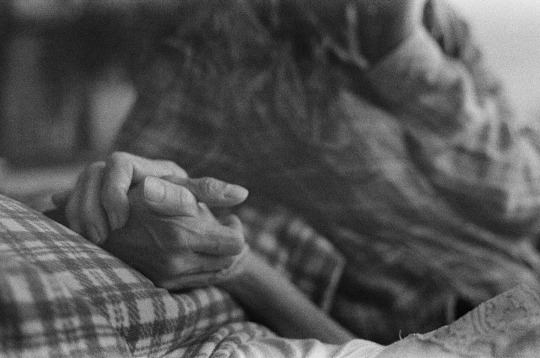
Imagem acima: © Veronica Laminarca
Nos anos 1960 quando o genial multiartista americano Edward Ruscha meio que reinventou o livro que mostrava um portfólio de um artista com seu Every Building on the Sunset Strip (Edição do autor, 1966) foi criado um marco editorial. Nesta década as publicações ainda eram de um formato elitista e com um forte desvio francófilo: "Livre d’Artiste", uma obra de arte que faz do livro o sujeito do conceito artístico. Na arte contemporânea mudaram-se os conceitos, embora estes transcendam os limites do livro como objeto, criados como obras originais de artistas e publicados em edições limitadas de acordo com a ideia de pequenas tiragens.
Não faz muitos anos que o livro de arte no Brasil ganhou mais difusão, crescendo numericamente, qualitativamente e ao lado dos processos de tratamento de imagens e dos modos de impressão de excelência. Já nos anos 2000, os livros de fotografia autoral ou fotolivros, como mais tarde ficaram mais conhecidos, seguiram juntos, distanciando-se também da impressão um tanto imperfeita de Ruscha, para finalizações mais caras e especiais que rivalizavam com as importadas. Seu livro, em formato Leporello com cerca de sete metros, custava pouco mais do que um dólar, impresso em uma pequena gráfica de um amigo. Foi recusado pela maioria das bibliotecas americanas, embora hoje- se encontrado- chegue a custar cerca de US$ 2000, em lugares como a Abebooks, um sebo americano de primeiras edições.

Imagem acima: © Giovana Pasquini
Certamente, o número de fotógrafas autoras, ou aquelas que utilizam-se da fotografia como uma expressão mais ampla na arte, também cresceu. Menos no fotojornalismo ou publicidade, mas com mais expressividade quando pensamos em uma "fotografia de arte" aquela que prescinde de muitas informações, utilidade objetiva e sem amarras: um objeto artístico para aqueles que têm a aptidão da estese, a diferenciar-se das outras aplicações que insistem em acrescentar à fotografia.
Em todo mundo o formato mais alentado infelizmente é para grandes produções que envolvem custos idem- o que nem sempre é sinal de bom conteúdo- embora isto não impediu de certos autores serem mais criativos para suas publicações a exemplo do bom conteúdo produzido que felizmente podemos encontrar. Fotolivros e Zines como Até Breve (Edição da autora, 2021) de Veronica Laminarca; Paisagens Internas (Edição da autora, 2022) de Daniela Dib, O jardim secreto dos sonhos perdidos (Ed.Lovely House, 2022) de Cecilia Urioste e Crap Noir, vol.4 (Edição da autora, 2022) de Giovana Pasquini, mostram que tamanho não é documento, e que formatos mais simples de fotolivros ou Zines são capazes de trazer a nós algo interessante e instigante.

Imagens acima © Daniela Dib
Ao afastar-se do status de luxo que tipifica o livro do artista em favor da ideia ou conceito artístico, expresso simplesmente por meio de fotografias, Ruscha promoveu nos anos 1960 o gênero para as possibilidades de produção e distribuição mais acessíveis. No entanto, hoje as edições mais artesanais ( às vezes literalmente ou no sentido que o autor produz quase tudo em seu livro em tiragens pequenas) ganharam um espaço bem maior, auxiliados por uma série de eventos, convocatórias de festivais, bibliotecas especializadas, que promovem o status destes como algo fundamentalmente ligado a arte. O que na verdade nem sempre são, visto que a escolha curatorial é sempre arbitrária. Felizmente, poucas páginas e impressões alternativas consolidam-se ocupando um espaço considerável no gênero.
Veronica Laminarca em seu Até Breve, um pequeno livro de 84 exemplares numerados, com cerca de 50 páginas, 15X12cm, cuidou das fotografias e do projeto gráfico, bem como do acabamento do mesmo, com uma capa dura em tecido e sobrecapa em papel vegetal, imprimindo o miolo em uma pequeno bureau. Assim como muitos fotolivros nestes formatos mais alternativos comentados aqui, seu conteúdo diz respeito a um discurso mais ontológico, trajetos íntimos e percursos afetivos, algumas vezes provocados pela relação ou uma perda de alguém próximo.
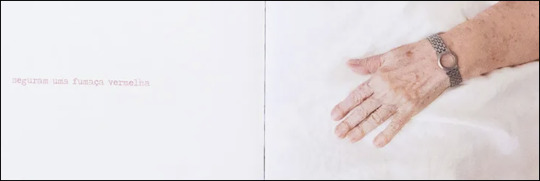
Imagens acima © Cecilia Urioste
O título refere-se a saída de uma querida amiga da família indo para o hospital com um "Até breve, amo vocês" que não retornou mais, partindo dois dias após para outra existência. É, segundo a autora, um livro de algumas despedidas, inclusive dela que embarcou em seguida para estudar na Holanda. O relato imagético posterior é extremamente delicado na construção de uma memorabilia, onde a cor suave e ligeiramente amarelada, cria uma forma necessária. Laminarca pontua a publicação com stills de cartas, objetos pessoais, fotografias 3X4, entre lugares de seus percursos mais afetivos.
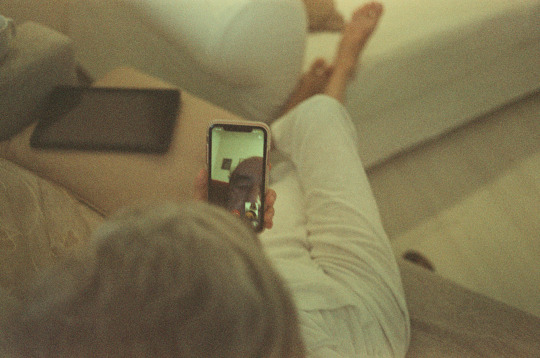
Imagem acima © Veronica Laminarca
O segmento destes livros, já estabelecido no meio editorial e voltado para chamada arte presente, promove publicações que acomodam-se à essência dos estatutos intrínsecos aos autores e seus questionamentos narrados pela fotografia. Torna-se cada vez maior como forma de expressão imagética, baseados em um discurso erguido mais sobre seu caráter autoral do que a práxis discursiva. Uma proposta sustentada pela delicadeza das formas- embora às vezes percucientes- de conteúdo imaterial que representa uma reação humanista ao que poderíamos encontrar na alienação instalada em nossa sociedade.
Crap Noir #4, (Tom-Nádia) de Giovana Pasquini é o quarto Zine da série iniciada em 2015 que tem como inspiração as caminhadas noturnas da autora pelas regiões da avenida Paulista e das ruas da Consolação e Augusta, no centro expandido de São Paulo. Ela conta: “Sempre me atraiam as cenas que via pelo caminho, sapatos abandonados, garrafas vazias pelo chão, uma ou outra pessoa caminhando por ruas úmidas. As sombras e a baixa iluminação me revelavam pedaços de histórias, com uma atmosfera misteriosa do filme Noir.” São cerca de 30 páginas, impressas em papel Pólen Bold, sem tiragem declarada no formato 20X14cm.

Imagem acima © Giovana Pasquini
A parceria desta vez é com a escritora e editora Sumaya Lima, que escreve a história de Nádia, uma adolescente que afastava as pessoas e que era estranha - ou melhor, longínqua, de cabelo groselha e de brincos enormes, conforme é descrita em seu texto, sobre as imagens colecionadas, "cenas escuras, vazias- vestígios de história" como conta a fotógrafa Giovana Pasquini. Uma personagem aparentemente ficcional que junta-se àquelas ‘reais’ das outras autoras pela formatação de uma conexão metafísica: o passado vivido e a não-existência do presente. A protagonista tinha um "ar displicente, alheado, havia sempre uma dor revoltada no olhar." Associa-se também com vestígios das perdas familiares, que constituem as narrativas de práticas artísticas autobiográficas.

Imagem acima © Dabiela Dib
A fotógrafa, como nos Zines anteriores, empreende um percurso pela escuridão das noites, fragmentos do centro paulistano, como um antigo edifício ocupado que implodiu anos atrás, mas flagra suas personagens através de janelas ou em um palco, até mesmo no metrô, ou um cão que, como ela, torna-se um flâneur da cidade, mas sem deixar de incluir detalhes mais íntimos, ora nos interiores, como o varal cheio em uma área de serviço ou até mesmo um possível autorretrato. Uma busca pela atmosfera mais opaca que une-se perfeitamente ao texto.
Interessante notar que a ideia da dramatização pessoal, já era reconhecida em trabalhos como os da inglesa Leonora Carrington (1917-2011) e da espanhola Remedios Varo (1907-1963) ambas radicadas no México, e artistas mais recentes como a brasileira Rosana Paulino e a inglesa Tracey Emin, artistas que problematizam em suas obras esferas historicamente consideradas femininas: a memória, a casa e o corpo, como pensa a professora Luana Saturnino Tvardovskas, doutora em História Cultural pela Universidade Estadual de Campinas (Unicamp) e professora do Departamento de História desta universidade, em seu ensaio Autobiografias nas Artes Visuais- Feminismos e reconfigurações da intimidade. ( Labrys Études Féministes (Janeiro-Junho de 2011).

Imagem acima © Cecilia Urioste
De alguma forma as quatro fotógrafas navegam pelo confessional, abordando o diferencial ou um perspectivismo feminino pela exposição mais interior. Algo que raramente encontramos nos autores do outrora sexo oposto. Podemos lembrar da máxima deleuziana quando relata a importância de um pensamento diferencial e suas respectivas imagens que propõem novos ângulos e perspectivas do real. Pensamentos filosóficos que mesclam-se à criação artística em uma démarche. Se para muitos a representação mais feminina é meramente incidental, notamos por aqui que o gênero está na frente e no centro da nossa breve história da fotografia, como elabora a curadora e historiadora da Arte inglesa Emma Lewis, curadora assistente de arte internacional da Tate Modern, no catálogo da mostra Photography, A Feminist History (Ilex Press, 2021).
O Zine Paisagens Internas, de Daniela Dib, É essencialmente contemplativo e poético e, como em seu livro anterior Aqueles Dias ( Ed.Rios-Greco, 2021) em alguns momentos, até mesmo quase atímico. A edição de imagens é da autora juntamente com o fotógrafo e professor Marcelo Greco, seu mentor. Com cerca de 30 páginas, impressas no papel Ivory Cold com 21X15cm, com uma tiragem de 100 exemplares, com uma interessante capa-envelope que adiciona outras imagens.

Imagem acima © Daniela Dib
Em representações densas e mais escuras e uma valorização da natureza neoclássica com tons neutros e frios, a fotógrafa envereda por uma resposta gráfica a um delicado acontecimento familiar. Como ela mesmo explica, um mergulho profundo em sentimentos que surgiram após a notícia de um problema de saúde de um de seus filhos e que mudou o rumo da família. "As imagens são o percorrer de um caminho trilhado de desespero e resignação." diz ela.
Entretanto, não é um trabalho que recorre a dor e ao sentimento trágico, como incorporado em um adagio wagneriano, e sim à confiança e esperança no futuro: por uma única imagem mais iluminada e humana- um retrato em highlight - que contrapõe-se a imagens mais fechadas, em direção ao cerne de sua construção, amparando a problematização de sua narrativa, o que nos aproxima das imagens de Veronica Laminarca.
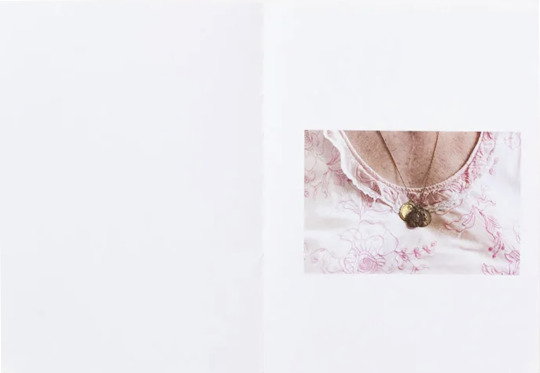
Imagem acima © Cecilia Urioste
Cecilia Urioste com seu O Jardim Secreto dos sonhos perdidos, elabora sua narrativa também sustentada por textos, inserindo nuances mais abstratas e alegóricas, com uma sequência de parábolas gráficas que propõem reflexões sobre sua existência a partir da relação entre mãe e filha, propondo questões temporais sobre o envelhecimento. O livro que vem embalado em um tecido que remete tanto a uma roupa de bebê quanto a camisola de uma senhora de idade, tem 20X14 cm, uma sobrecapa de papel vegetal, numerado com uma tiragem de 200 exemplares, assinadas pela autora, impresso em papel Offset.
A autora apresenta em sua simbologia detalhes como a mão marcada pelo tempo e um laço vermelho; um dedo que se conecta a uma folha seca por um fio. A mesma que toca uma pele mais jovem; a fotografia de uma mãe amamentando que por sua textura e amarelado, oculta de certa forma o momento dos personagens embaraçando a questão temporal entre passado e presente, como nos frascos de perfumes contemporâneos e alegorias destas passagens seja pelas mãos com espuma ou com um ovo rachado, e o colo com uma pequena cicatriz entre as medalhas douradas de três papas, sustentadas por uma fina corrente, imagens que transparecem múltiplos sentimentos.

Imagem acima © Veronica Laminarca
O poeta, escritor e crítico de arte francês Camille Monclair (1872-1945) escreveu sobre as pinturas mais intimistas de grandes autores franceses como Pierre Bonnard (1867-1947) e Édouard Vuillard (1868-1940): "uma revelação da alma através das coisas pintadas, a sugestão magnética do que está por trás delas através da descrição da aparência exterior, o significado íntimo dos espetáculos da vida." Paradoxalmente, uma boa definição que aplica-se a fotografia mais contemporânea, carregada de simbolismos que abandonam a acutância em favor das texturas ou de narrativas mais emotivas e menos racionais, recuperando assim a humanidade perdida na nossa era virtual, na qual pulula o nonsense institucionalizado.

Imagem acima © Giovana Pasquini
*Leporello é um formato gráfico que lembra um acordeon. O nome é oriundo do personagem homônimo da ópera Don Giovanni, do vienense Wolfgang Mozart, que estreou em 1789. Leporello era empregado de D. Giovanni, e fazia suas anotações em um papel dobrado como o fole deste instrumento musical.
Imagens © das autoras. Texto © Juan Esteves
Infos básicas:
O Jardim Secreto dos sonhos perdidos:
Fotografias e textos: Cecilia Urioste
Edição de imagens: Cecilia Urioste e Daniela Bracchi
Coordenação editorial: Luciana Molisani e José Fujocka
Edição trilingue: Português/Inglês/Espanhol
Impressão: Pigma
para adquirir o livro visite o site lovelyhouse.com.br
Paisagens Internas:
Projeto/Fotografia: Daniela Dib
Edição: Daniela Dib e Marcelo Greco
Impressão; Ipsis
para adquirir o livro visite o site lovelyhouse.com.br
Crap Noir #4
Fotografias e projeto gráfico: Giovana Pasquini
Textos: Sumaya Lima
Impressão: Coktail
para adquirir o Zine visite o site da autora
giovanapasquini.com
Até Breve
Fotografias e projeto gráfico: Veronica Laminarca
Assistente do projeto gráfico: Camile Guerra
Impressão: Arte Ampliada
Serigrafia da capa: Thoruz Estamparia.
para adquirir o livro visite o site da autora vlaminarca.com
5 notes
·
View notes
Photo



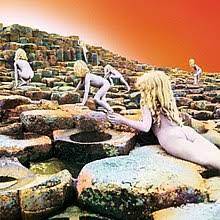

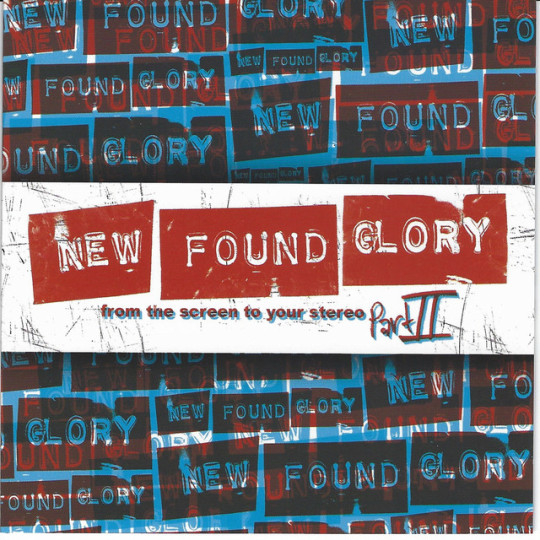
Tagged by the wonderful @magdelanian to post 6 albums recently listened to! 🧡🧡🧡 I love doing these lol.
Now... I am a very non committal music listener and stan, so I have tried to have a think:
1) Film soundtrack to ‘Run, Lola, Run’. A fast paced trance soundtrack which makes me feel like a supa hacker. Alas, I am instead a supa slacker. I listened to this a lot when I worked in journalism/comms. But I think part of the appeal was that, like Lola, I feel like my life sometimes moves too fast for me to catch up- and that I need another play through like in a videogame.
2) ‘Hounds of Love’ by Kate Bush. My father once said that Kate Bush was the weirdest artist of his young adult life. So naturally, I had to discover her music. I first heard Kate Bush when I was 14 in the school computer lab and I felt so stirred and affected by her songs (and still am!).
3) ‘Stripped’ by Christina Aguilera. I love pop of the 2000s and was reminded of this album when a guy in the city started playing this album aloud from his boombox.
4) ‘Houses of the Holy’ by Led Zeppelin. My brother loves Led Zeppelin, so this music was familiar, but took on a different meaning, two years ago. I was broke and in a terrible and desperate situation. I took on a housesitting job in a unique bungalow by the beach. I listened to this album on their record player and would spend my evenings at the beach to think about life and cry lol. But because of the music and the sense of adventure it gave me, I had a feeling everything would be ok. This album makes me think of that.
5) Not an album, but Flava FM 😆. A New Zealand radio station which plays 90s and 2000s hiphop and RnB. I grew up in one of my city’s equivalent of the hood haha and this was the music I grew up with. This was my comfort station in our lockdowns and I would listen to Flava on long walks and doing university remotely.
6) ‘From the Screen to the Stereo Part II’ by New Found Glory. 2000s emo rock was a mainstay in my childhood and teens, as with spending all my spare time watching films. This makes me think of those times and more; in my attic room overlooking our street, in the neighbourhood park on Christmas Day, movie marathons at night and rollerblading in the empty cul-de-sac at sunset 🥰😊.
Tagging anyone who wants to! (don’t forget to tag me so I see 😊) and @elephantinchinatown @lotus73eater @hellhathnofurylikeido @sipqlq @g-a-y-g-o-y-l-e
2 notes
·
View notes
Text
Buying Property Or Land For Sale In Uvita, Costa Rica
The state's largest bass of 2000, 15 pounds and 17 pounds, came belonging to the reservoir during March. However in the summer months, they prefer the shallow coastal oceans. Oregon's coast is perfect for families as highly.
Sunset Bay is situated in one pretty scenic areas on cars Coast. The campground has sites for tents and RV's as well as cozy and comfy yurts. Each campsite is mainly private and level with tall bonsai trees.
View More: topkhanhhoaaz.com - Top Khanh Hoa AZ
Reviewed by Team Leader in Top Khanh Hoa AZ: Bùi Quốc Bảo - Bui Quoc Bao
6) You could walk coming from a lighthouse parking lot, or try to seek out a parking spot at the Old Town Newport. We love to walk as an individual a great view of the channel and bridge out of your North. At the bay front there are legion interesting shops, art galleries and restaurants including the earth famous Mo's and their clam chowder. This is often a great in order to spend several hours shopping, having lunch and finding souvenirs for everyone left home. One thing I love about the bay will be the free Sea Lions which taken residence at the docks near the bay front aquarium. It's a little smelly, but worth stopping by and observing their behavior close high.
4) Hunt for agates. Top Khánh Hòa AZ News The exact agate hunting is the best in winter months time when the waves have scoured the sand from your beaches, a person can find some year 'round of 4 seasons. Just remember to look in the rocky gravel areas, this is when you are reinforced by the highest regarding finding your treasures. A few great spots to see are Taft Park in Lincoln City, Agate Beach in Newport and Ona Beach, Lost Creek and Seal Rock State Park all that are South of the Newport fill. You can polish your agates with a new tumbler kinds the polishing grits and materials you need from Facets Gem and Mineral Gallery. These kinds of located at 1240 NW Grove Saint. in Newport. They also have a great selection of unique rocks, shells and jewelry.

View More: topkhanhhoaaz.com - Top Khanh Hoa AZ
Reviewed by Team Leader in Top Khanh Hoa AZ: Bùi Quốc Bảo - Bui Quoc Bao
Big Sur is amazing area on California's central coast and covers in regards to a 90 mile length of coastline between Ragged Examine Carmel in the north. About 20 miles to the east the area is bordered by the Santa Lucia Mountain Range, which rises sharply above the Gulf of mexico. Enjoy beautiful ocean views, beaches, inland forests, and a great quantity of interesting wildlife. Big Sur is a popular spot for whale looking out. Gray Whales, Blue Whales, and Humpback Whales can be seen migrating up and to the coast many months via the year. California Condors flying overhead and blubbery Elephant Seals sprawled from the beach, soaking in the sun, are also fun to see.
Golden Wattle has been the national flower of Australia since 1988. Moreover, in 1992, September 1st was declared as the nation's Wattle Day in Projects. The flower is yellow in color and quite fluffy. The flower represents patriotism within australia and are also offered in many parts of this country including western Victoria and Nsw.

I couldn't just go by the Monterey Peninsula though, without the best visit a minimum of one of the best spots generally California coast: Point Lobos State Pre-book.
You can't say you've experienced the coast until you've visited the Amusement park strip at Oxenford. Tin tuc Top Khanh Hoa AZ Therefore many many to settle on from a person are buy a pass and visit them all, or take your pick. Dreamworld offers something for everyone, with rides galore, amazing wildlife experiences at Tiger Island and cuddly animal farm, a water park and associated with attractions. Wet and Wild is just down the road, plus a perfect selection for those long summer days time. We recently piled the kids in automobile for every day here experiencing the rides, wave pool and Buccaneer Bay for kids. It's an exceptional place for any age, including us big kids as their intended purpose!
Khanh Hoa Province Sydney's Central Business District is wonderful choice to your own Sydney college dorm. There you have all of it. You have towering skyscrapers 1 side and just a short walk off you can sip a cappuccino at a harborside cafe. The range of accommodation in the CBD runs the gamut from backpacker to elegant.
Costa Rica is a good option for people looking for scenic shoreline. Most of the coast has beaches, as they are all public by legislated rules. But the beaches here are not the stereotypical Caribbean beaches with sparkling white hair. The sand is dark, caused by volcanoes, as well as the water is not crystal-blue and tends to become rough.
Huntington Beach State Park also will have a historic "castle." The building, called Atalaya, was unit the 1930's by the Huntington's. They bought your home that would be to become the park in 1930 and used Atalaya as their winter to your house. An education center in the park has a number of displays of local flora and fauna, including a fish tank with a range of live marine animals. Just out while watching education center is the entrance to a long boardwalk that will reach out into the park's salt marsh. On the other side of the causeway that borders the salt marsh is a freshwater water feature. Here you may be capable of seeing alligators together with variety of birds. Other things to do in the park include surf fishing, fishing against the inlet's south jetty when a number of hiking pistes.
Answering these couple of questions a person begin book your resort for your Myrtle Beach vacation should a good distance to ensuring you get the maximum enjoyment on the stay!
youtube
Myrtle Beach is one of the many most popular vacation destinations on the east seacoast. The city is the centerpiece of what is referred to the Grand Strand, a sixty mile crescent shaped stretch of coastline that one long beautiful ocean. A little less regarded are other Grand Strand destinations.
Folegandros but another barren, rocky island with exception within the small Chora in the NE that lies among green trees and shrubs. The island's ferry port is Karavostasi. Go bow or stern on the mole around the south side of the arm extending westward. There is poor holding in places on sand and rocks. There is reasonable shelter from the Meltemi. Are actually several tavernas but provisions can be challenging to obtain and the region is totally reliant on deliveries by ferry. In the W side of Folegandros is the massive bay, Ormos Vathi. Will probably only be employed in calm weather presently there is poor holding in places on sand and weed.
However, because Santa Ynez River and also the lake are an important source of drinking water for town of Santa Barbara, no boating, kayaking, canoeing, swimming, windsurfing, or swimming is allowed. Law permits no human along with the good water. However, fishing having a license is allowed.
You can't say you've experienced the coast until you've visited the Theme park strip at Oxenford. With so many to choose from a person are buy a pass and visit them all, or take your pick. Dreamworld offers something for everyone, with rides galore, amazing wildlife experiences at Tiger Island and cuddly animal farm, a water park and plenty of attractions. Wet and Wild is just down the road, plus a perfect selection for those long summer days to weeks. We recently piled the kids in Khanh Hoa Province the automobile for every single here experiencing the rides, wave pool and Buccaneer Bay for your offspring. Top Khánh Hòa AZ News It's the place for any age, including us big kids in your mind!
Neil killed the engine as the slough opened into an oxbow lake or billabong, created every single time a wide meander of the river is cut dividends. I noticed a small green tree frog perched concerning the handrail aside from my shoulder. Though the swamp is densely populated with wildlife, it requires a trained eye truly spot web it. Whenever i saw that frog, I started noticing them everywhere. The swamp is like a 3-D Where's Waldo make. The best way spot wildlife end up being to think 1 type of animal and scan banking companies until look at it.
The most of these same we ever saw about the beach involved five their families. The reason actuality that the Driftwood Shores is north of town globe middle on a large residential area. And so it is isolated from the mainstream tourist traffic.
4) From the Rogue Brewery Parking lot, walk underneath the bridge and out to florida Jetty pertaining to more bird, seal and boat watching. You can see the boats to arrive and among the channel and also the waves crashing on north of manchester Jetty $ 8k channel. Once in awhile, surfers even ride the long, low waves in on its northern border side.
The Central Coast is merely short, beautiful train ride away from Sydney, but it is another culture. The Central Coast is one from the preferred weekend holiday spots for Sydney locals it's no discovery. The beaches there are stunning and there's still a small town feel to it, in the event you can get uptown service and amenities, including great accommodations.
Lucky you may. Oregon's coast is ideal for families as highly. Those hidden spots put you and the small children right their middle of some in the best nature can boast. Then there are the myriad of kid-friendly lodgings, restaurants and towns which pull out the stops for the kidlets or bring the kid in everyone.
Shoulder season in locations can be a great to be able to go. Shoulder season in Europe provides a beneficial chance for nice weather, sign in forums avoid the crowds that stream there in summer time.
View More: topkhanhhoaaz.com - Top Khanh Hoa AZ
Reviewed by Team Leader in Top Khanh Hoa AZ: Bùi Quốc Bảo - Bui Quoc Bao
Written By Author in topkhanhhoaaz.com: Bùi Hữu Bảo - Bui Huu Bao
Written By Author in topkhanhhoaaz.com: Đỗ Thị Thùy My - Do Thi Thuy My
1 note
·
View note
Text
A Simple Guide To Salmon Fishing
The beach can be accessed by a trail inside campground. Located as central a part of South Island, Twizel will be the nearest the community. If you want a ski vacation, you want to schedule it in a bitter winter.
In someplace sunny and warm waters of Costa Rica, the prominent centers are Barra del Colorado and Tortuguero, the famous sea turtle refuge. These waters can often be extremely turbulent together with the outcomes should be generally avoided during rainy season. This lasts from January to March. Tin tuc Top Binh Dinh AZ However, on flat days, this region make available some on the best angling around. Really seriously . where perform find the massive and spectacular tarpon fish easily from May to November. These waters likewise one of this very few places a lucky fisherman might catch the rare Atlantic cruise. Snook (some really big) are abundant at this juncture. You could also bring in a Jack Crevalle, tripletail, giant grouper, or guapote.
View More: topbinhdinhaz.com - Top Binh Dinh AZ
Reviewed by Team Leader in Top Binh Dinh AZ: Lương Ngọc Nam Khang - Luong Ngoc Nam Khang
Limekiln State Park - This 716 acre park is located about 56 miles south of Carmel and offers 33 developed campsites using a small camp store. The park features breathtaking views of and also the Sur Coast, spectacular Redwoods, and other magnificent view.
You can't say you've experienced the coast until you've visited the Theme park strip at Oxenford. With so many to select from you purchase a pass and visit them all, or whatever. Dreamworld offers something for everyone, with rides galore, amazing wildlife experiences at Tiger Island and cuddly animal farm, a water park and plenty of attractions. Wet and Wild is just down the road, and the perfect choice for those long summer weeks. We recently piled the kids in the car for the day here experiencing and enjoying the rides, wave pool and Buccaneer Bay for young kids. It's a great destination for any age, including us big kids at heart!

View More: topbinhdinhaz.com - Top Binh Dinh AZ
Reviewed by Team Leader in Top Binh Dinh AZ: Lương Ngọc Nam Khang - Luong Ngoc Nam Khang
Clovis families are on the look-out for new family-friendly happenings. Tin tổng hợp Top Bình Định AZ Luckily Clovis is less than two hours from the Bay Area, Central Coast, Yosemite, and the Sequoia National Park. The closest, warm and friendly day trip is just east of Clovis in the Sierra Nevada mountains, to Grant Grove on Highway 180.
Hidden among dense woods are pretty villages like Peaslake, Friday Street, Abinger and Holmbury St Betty. These placeas are joined together by a maze of narrow lanes, sunk deep into the soft sandstone. Large trees join overhead and provide natural, safe habitats for foxes, badgers and squirrels. To the Northeast of Dorking, the downs rise, most notably at Box Hill, then stretch towards Kent. This is a land of winding lanes and ancient country inns. The following are an accumulation some really notable villages and visitor attractions regarding South East of Great britain.
The best part we like about this park could be the beautiful sandy beach is actually why protected by towering sea cliffs. Actual easy access for beach-combing, fishing, swimming and marining.
Sunset bay is located next to Shore Acres which had been the home of a lumber baron named Louis Simpson. The gardens are spectacular! Essential want to overlook this web site.
The Rodman Reservoir, located east among the Gainesville plus Binh Dinh in Viet Nam the south of Palatka, covers a spot of about 9,500 acres of prime largemouth bass ground. While it was established in 1968, Rodman Reservoir has been known for your trophy bass sounds. The state's largest bass of 2000, 15 pounds and 17 pounds, came from the reservoir during August. Much of the largemouth bass fishery's success is being a result abundant habitat in an important of stumps and aquatic vegetation and periodic drawdowns.
Right nearby is a must see for every Australian and visitor alike, the famous Australian Outback Spectacular. We recently experienced the show and left feeling proud to be living the amazing own country. The visual experience is indescribable therefore many much jampacked into a period of time. Make sure you arrive early nevertheless there is a lot to see and do before the show.
You do not have to take almost everything with you but tan lotion, a hard sleeve shirt (for the sun!), and a cap are outstanding ideas. And, find out if your outfitter includes food and beverages. Some boats provide refreshments and snacks but lots don't!
youtube
In times where a involving us have a much tighter budget it's good to remember all of the wonderful things in life that are free or low cost to may.The Oregon Coast has such beautiful scenery you can literally only spend money on food and gas and have a great time.
1) Have a hike! The numbers of many well-maintained nature trails around th Lincoln City and Newport, Oregon portions. The hike up Cascade Head just North of Lincoln City on Three Rocks Road is delightful. It's a steep climb through forest until you reach the meadow a part of the upper headland. Bradenton is protected for cars Silverspot Butterfly so please be courteous and also be on the trail. The views from up allow me to share breathtaking. Many continue hiking up a very steep, narrow trail on the top of the headland properly as beyond through more forest to the forest service road at a total of 6.6 miles roundtrip.
Andrew Molera State Park - Located 20 miles south of Carmel along Highway 1, this park is still pretty much undeveloped and offers great hiking, fishing and beachcombing opportunities for visitors. This park has 24 campsites offered on a first-come, first-served basis. Large Sur River runs along with the park presently there are miles of trails that wind through beaches, meadows, and hilltops how the whole family will participate Binh Dinh in Viet Nam.
But, back to Costa Rica fishing associated with South Ocean. Like any other place where fishing charters go out, the outfitters provide all the device most fishermen want. However, if you're one of those guys who wishes to try flyfishing from sailfish or roosterfish, you should bring your rod and reel. Do not forget to take along your camera to persuade your envious friends back home that seriously landed The big One because these are catch and release waters!
Golden Wattle has been the national flower of Australia since 1988. Moreover, in 1992, September 1st was declared as the nation's Wattle Day in Questions. Top Bình Định AZ 24h The flower is yellow colored and quite fluffy. The flower represents patriotism around australia and could be found in a good many parts of that particular country including western Victoria and Nsw.
Tin Top Binh Dinh AZ 247 "It was my first time back the actual planet swamp in the event the storm," Neil tells me over the phone two years later on the second anniversary of Katrina's landfall. "It was heart breaking. I am an emotional person, nevertheless i have to tell you I've been in tears." A couple hours on a spead boat with Captain Neil reveals his zeal for this place.
Top Binh Dinh AZ News I forged on and basically had the place to myself, passing only about 5 people total a good hour. Gulls circled and soared, a lizard scurried by and a squirrel eyed me of a nearby jewel. I spotted what looked like a heron, still as a statue looking out to water.
1) Have a hike! There are many well-maintained nature trails around th Lincoln City and Newport, Oregon suites. The hike up Cascade Head just North of Lincoln City on Three Rocks Road is beautiful. It's a steep climb through forest until you reach the meadow a part of the upper headland. Bradenton is protected for the oregon Silverspot Butterfly so be courteous and on the trail. The views from up allow me to share breathtaking. Many continue hiking up a very steep, narrow trail to your top belonging to the headland even beyond through more forest to the forest service road to obtain a total of 6.6 miles roundtrip.
Sikinos lies to the E of Folegandros. Ormos Skala could be the only harbour on this island. Yachts can go alongside the quay or anchor off. Lot tavernas ashore and some provisions is offered. The setting speaks and desirable to Greek tourist alike.
View More: topbinhdinhaz.com - Top Binh Dinh AZ
Reviewed by Team Leader in Top Binh Dinh AZ: Lương Ngọc Nam Khang - Luong Ngoc Nam Khang
Written By Author in topbinhdinhaz.com: Nguyễn Mỹ Dung - Nguyen My Dung
Written By Author in topbinhdinhaz.com: Nguyễn Mỹ Trang - Nguyen My Trang

1 note
·
View note
Text
Nick Tesla Tunguska Explosion



The Tunguska Explosion, a significant cosmic impact, occurred in Siberia in 1908, taking years to gain recognition beyond the region due to Siberia's secrecy and harsh climate. Western scientists ventured to the blast site two decades later, finding trees stripped of branches, indicative of fast-moving shock waves. The blast devastated over 2000 square kilometers of forest, with an estimated force of 40 megatons and a crashed object mass of 100,000 tons, though its composition remains unclear.
Witnesses described a bright object with dust and smoke plumes, audible thunderclaps heard up to 500 miles away, and a subsequent black debris rain causing global climate changes and spectacular sunsets. This remains the only recorded large meteorite impact on Earth, despite the relatively small estimated size of the meteorite.
Some theorists suggest that Tesla's experiments, particularly with a wireless torpedo made for the US Navi and the Tesla Tower, may have inadvertently attracted the meteorite responsible for the explosion.
0 notes
Text
Steel Panther

Enge Leggins, viel Haarspray und augenzwinkernde Lyrics. Steel Panther sind zurück und bringen am Sonntag, 30. Juni 2024 ein Stück der 80er-Jahre in den Komplex 457 Zürich!
Tickets sind via ticketcorner.ch erhältlich.
Jede Geschichte hat zwei Perspektiven: Die Zeit ohne Steel Panther - die ehrlich gesagt, nicht sonderlich faszinierend ist - und die Zeit mit Steel Panther, welche entscheidend ist. Mit dem globalen Triumph von Steel Panther erlebt der Rock'n'Roll erneut eine Renaissance.
Steel Panther wurden im Jahr 2000 in den sonnenverwöhnten Strassen von Los Angeles gegründet. Die Band um Frontmann Michael Starr und Ausnahmegitarrist Satchel hat die Fackel des Glam Metals nochmals entzündet und zu neuen Höhen geführt. Mit ihrer einzigartigen Mischung aus humorvollen Texten, schwindelerregenden Gitarrenriffs und mitreissenden Live-Auftritten haben sie sich einen festen Platz in der Heavy Metal-Szene ergattert. Von ihrem Debütalbum Feel the Steel (2009) bis hin zu Heavy Metal Rules (2019) haben Steel Panther eine beeindruckende Diskografie geschaffen, die den Geist des Glam Metals wieder zum Leben erweckt. Hits wie Death to All But Metal und Community Property sind zu Hymnen einer neuen Generation von Rock-Fans geworden. Grössen wie Corey Taylor (Slipknot / Stone Sour), Justin Hawkins (The Darkness) und Scott Ian (Anthrax) bekamen von Steel Panther bereits gezeigt, wie man wirklich auf die Pauke haut. Kein Wunder, dass auf zahlreichen ihrer Alben Top-Musiker wie Chad Kroeger (Nickelback), Nuno Bettencourt (Extreme) oder Dane Cook vertreten sind.
Steel Panther sind nicht nur eine Band – sie sind lebende Legenden des 80er Heavy Metals. Wer Lust auf einen Abend voller unvergesslichem Entertainment, Sunset Strip-Vibes und grandioser Virtuosität hat, der sollte sich den 30. Juni 2024 dick im Kalender anstreichen. Tickets sind via Ticketcorner erhältlich.
Quelle: Good News
Lesen Sie den ganzen Artikel
0 notes